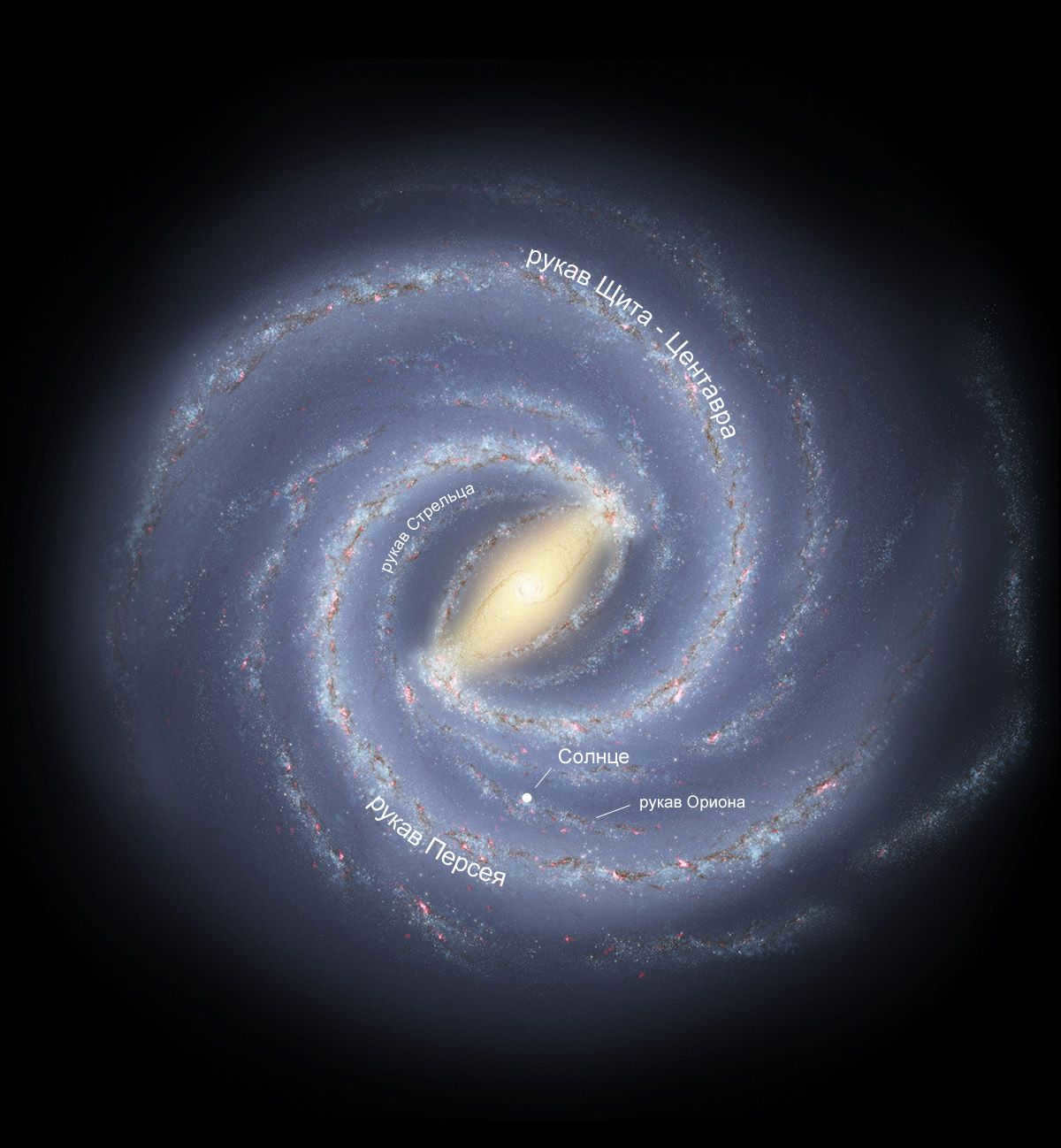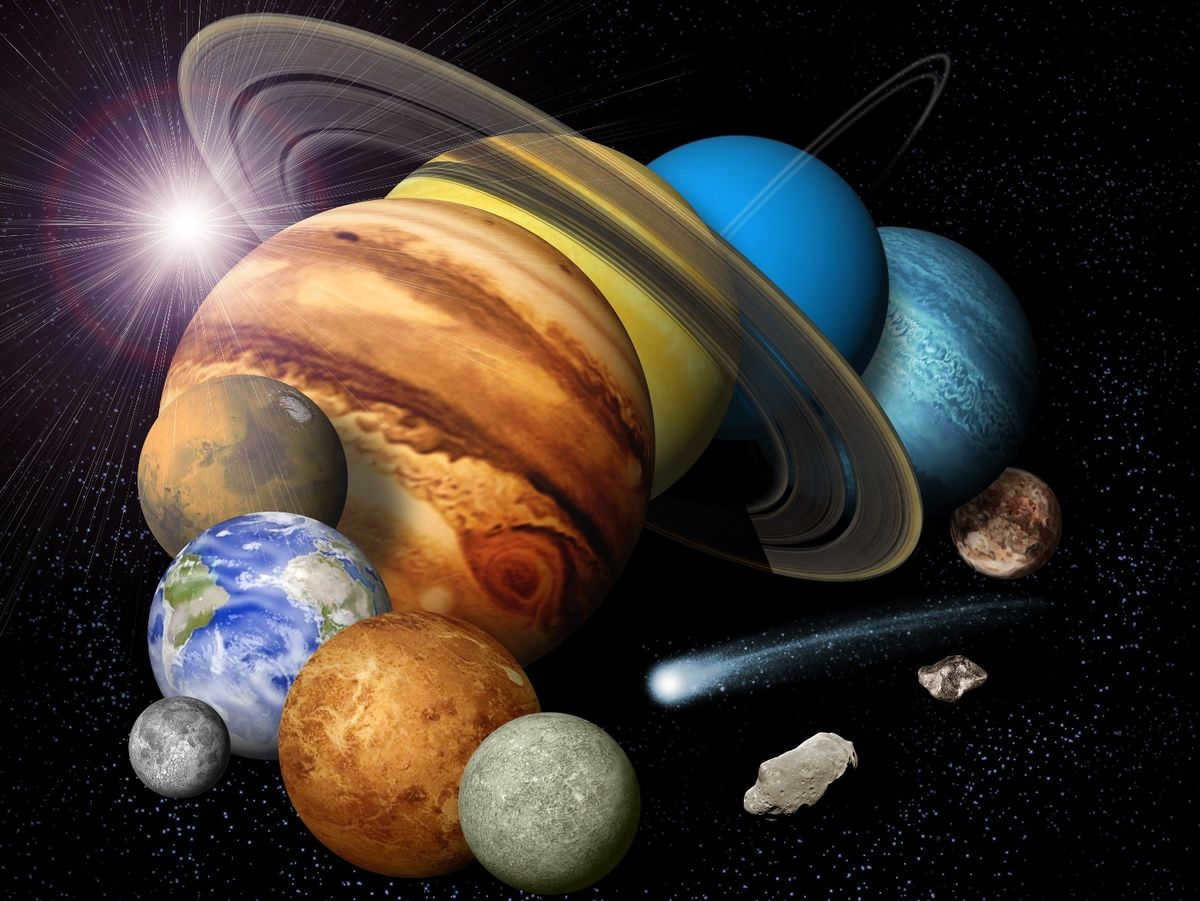
The star called the Sun is the center of a vast collection of planets known as the solar system. These planets, along with their moons, asteroids, comets, and numerous meteoric elements, orbit around the Sun, which is significantly larger and heavier than them.
The star at the center of our solar system is called the Sun.
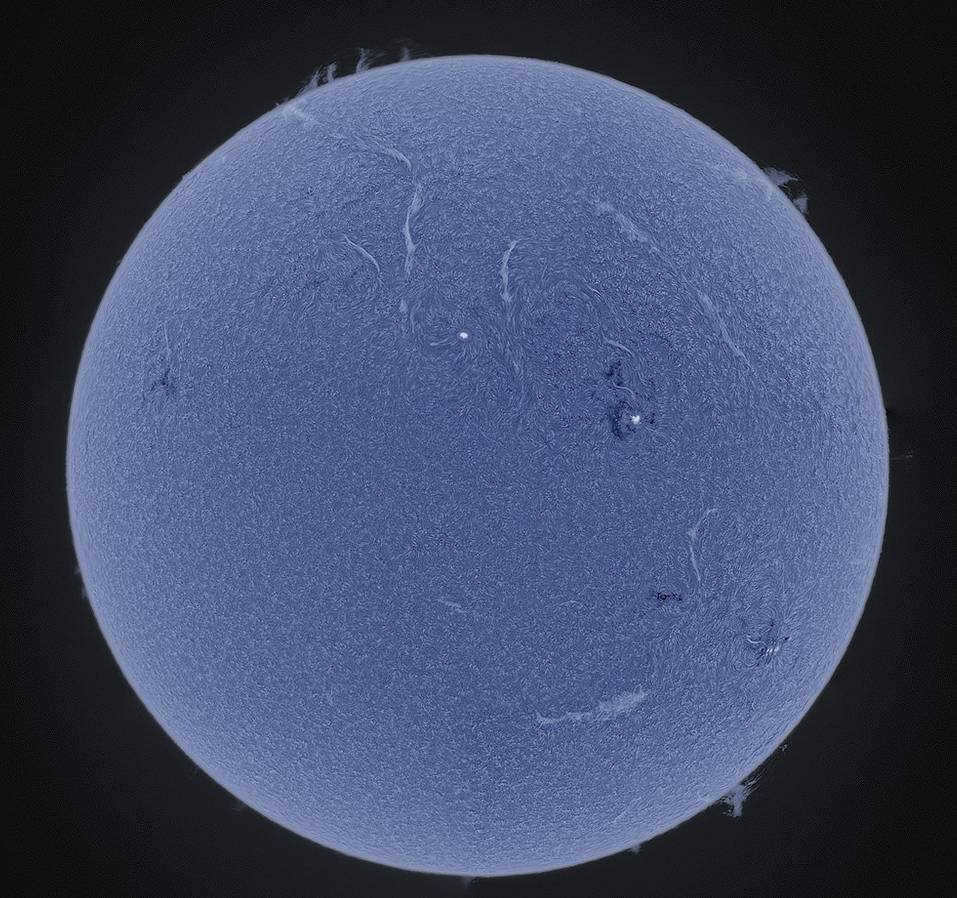
An image of the Sun captured in the H-alpha wavelength.
It should be noted that while the Sun may not be the largest or hottest star in the Universe, it holds significant importance for us. Without it, the solar system, the planets within it, and the life forms inhabiting those planets would not exist. Deep within the Sun’s core, nuclear reactions occur, converting hydrogen into helium and releasing an immense amount of heat – reaching temperatures of approximately 5000 degrees Celsius on the Sun’s surface. Despite its strong gravitational pull, the Sun also emits charged particles known as solar wind. These particles are reflected by Earth’s magnetic field, and at the poles, we can still witness the solar wind in the form of the auroras.
Mercury
Mercury is the smallest planet in our solar system, with a diameter of about 4,879 kilometers. It is also the closest planet to the Sun, orbiting it at an average distance of about 57.9 million kilometers. Mercury has a very thin atmosphere, consisting mostly of helium and traces of hydrogen, oxygen, and sodium. Due to its proximity to the Sun, temperatures on Mercury can reach extreme highs of up to 800 degrees Fahrenheit (430 degrees Celsius) during the day, while dropping to minus 290 degrees Fahrenheit (minus 180 degrees Celsius) at night. Despite its small size, Mercury has a relatively high density, which suggests that it has a large iron core. The surface of Mercury is covered in craters, similar to the Moon, and has a large number of cliffs and scarps. The planet’s geology is believed to have been shaped by volcanic activity in the past.
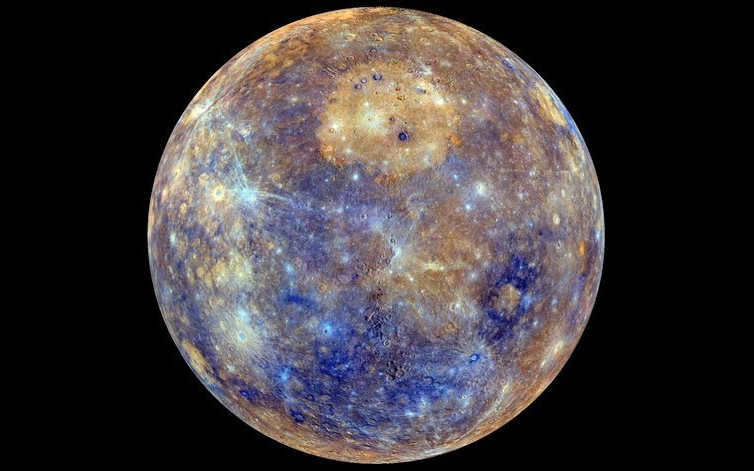

This is an image of Mercury captured by the MESSENGER probe.
As the smallest planet in our solar system, Mercury does not have any satellites. It completes a full orbit around the Sun in just half of its days. Mercury is characterized by its enormous metallic core and a relatively small crust that is heavily cratered. Additionally, the planet has an extremely thin atmosphere, which is virtually non-existent.
Venus
Venus is the second planet from the Sun in our solar system. It is also the closest planet to Earth. Venus is often referred to as Earth’s sister planet because it is similar in size and composition. However, Venus has a much hotter climate than Earth, with temperatures reaching up to 900 degrees Fahrenheit. The planet is covered in thick clouds of sulfuric acid, making it impossible to see the surface from space. Venus is also known for its retrograde rotation, meaning it spins in the opposite direction of most other planets. Despite its harsh conditions, Venus has always been a subject of fascination for astronomers and scientists alike.
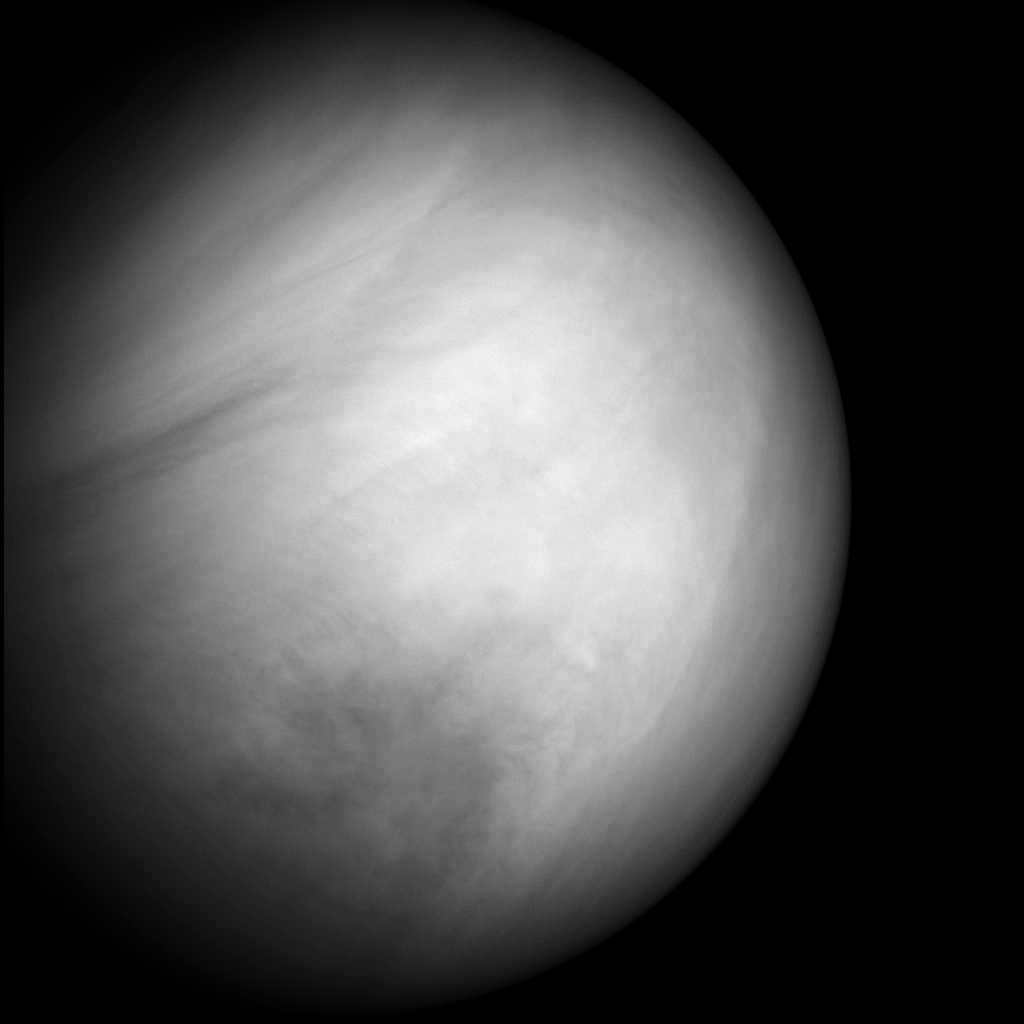

Venus, as seen in the photograph taken by the MESSENGER spacecraft.
Venus is well-known for its extremely high surface temperature, reaching approximately 480 degrees Celsius. This characteristic distinguishes Venus as the hottest planet in the solar system. Additionally, Venus possesses an exceedingly dense atmosphere composed mostly of carbon dioxide. Furthermore, this planet experiences thunderstorms of greater intensity compared to those on Earth. Lastly, Venus does not have any natural satellites.
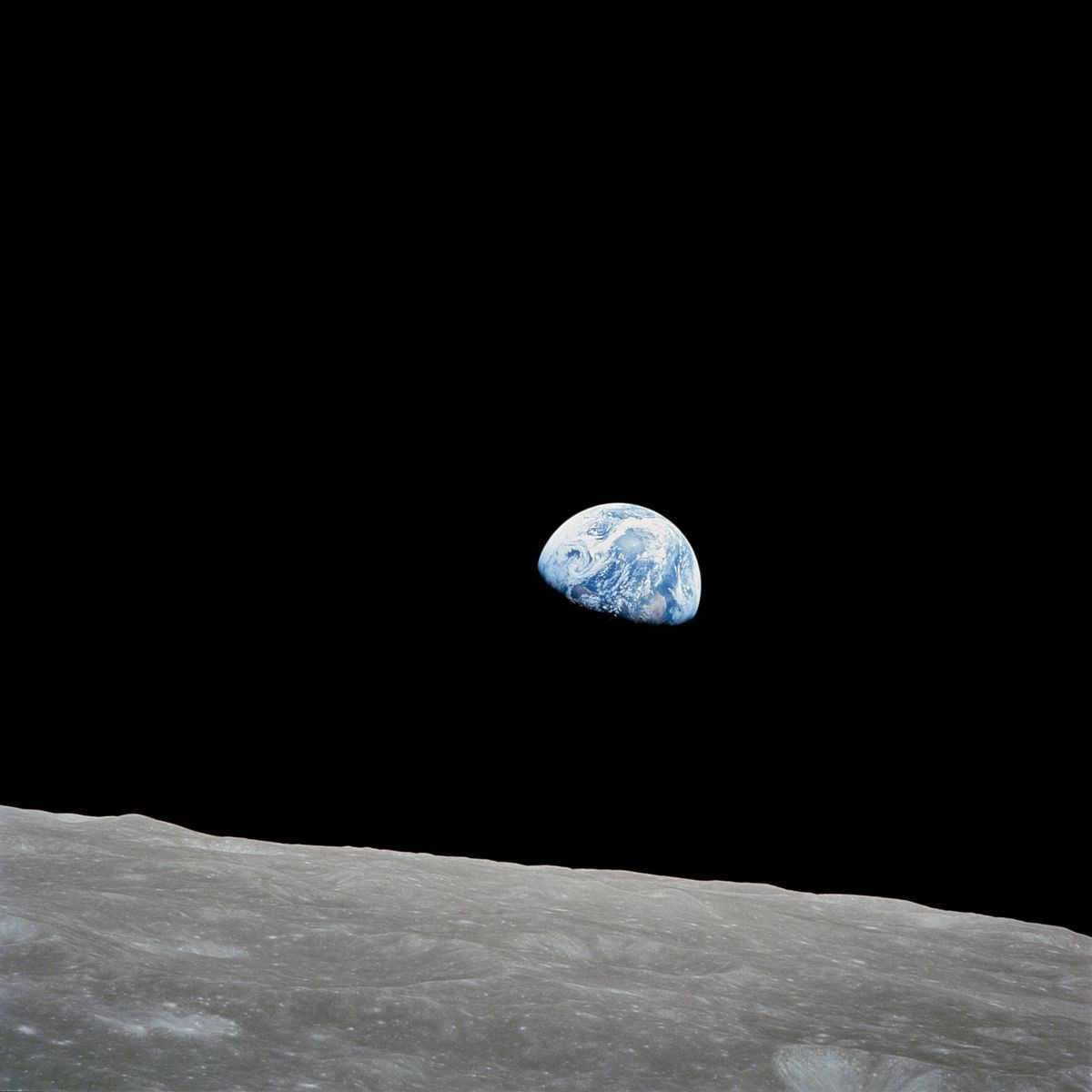
Earth is the only planet in our solar system that boasts a vast ocean covering approximately 70% of its surface. What sets Earth apart even further is its distinctive atmosphere, which contains a higher concentration of oxygen compared to any other planet in our celestial neighborhood. The Moon, Earth’s largest satellite and part of the terrestrial group of planets alongside Mercury, Venus, and Mars, completes this remarkable cosmic ensemble.
Red Planet
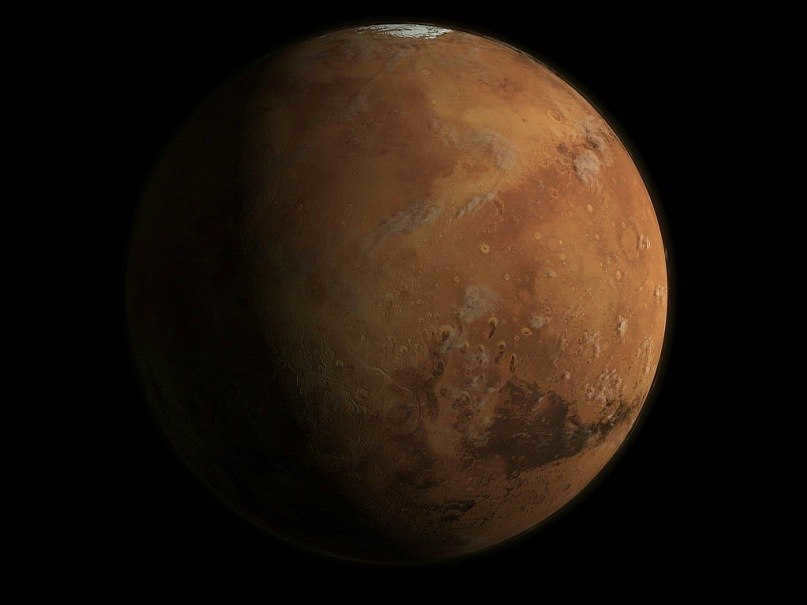
Mars is the final planet in the Earth group. What makes Mars particularly intriguing is its surface – the presence of channels suggests that water may have existed on the planet in the past, and the Olympus volcano is the tallest volcano in the entire solar system. The surface of Mars has a reddish tint, which can be attributed to its high content of iron oxide. Additionally, Mars has two moons, Phobos and Deimos.
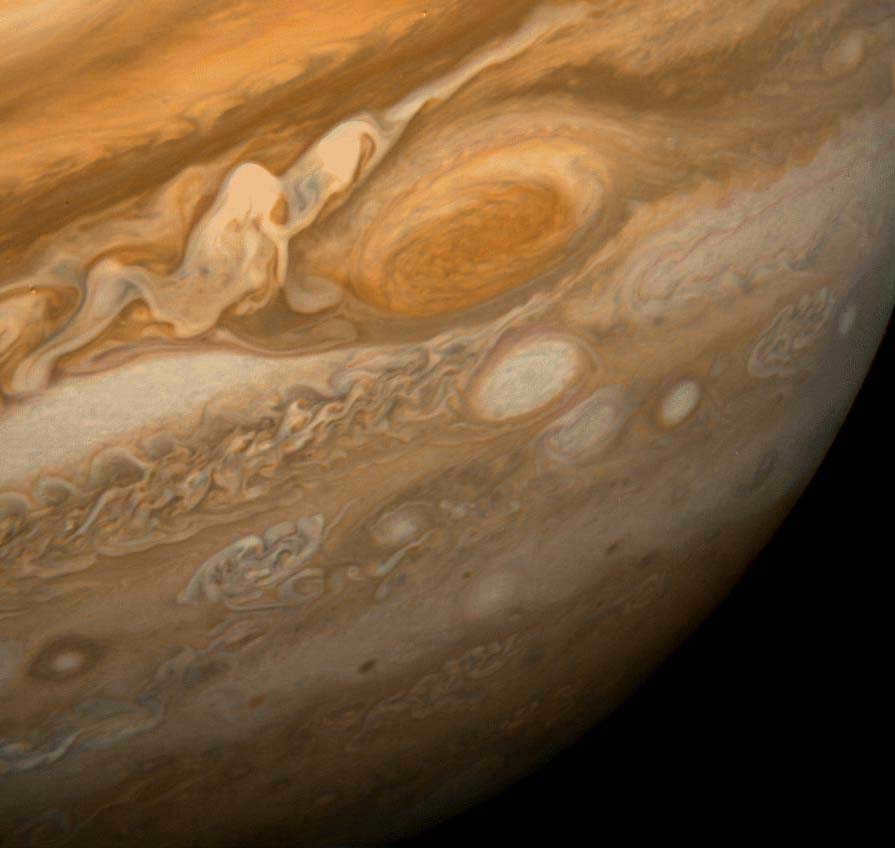
Jupiter, Voyager 1 image
The largest planet in our solar system, Jupiter boasts an impressive collection of moons, the most well-known being the Galilean satellites. One fascinating feature of Jupiter is the Red Spot, a massive vortex swirling on its surface with winds reaching speeds of over 300 km/h. This atmospheric phenomenon has been spinning for centuries, captivating scientists and astronomers alike.
Saturn: The Ringed Planet
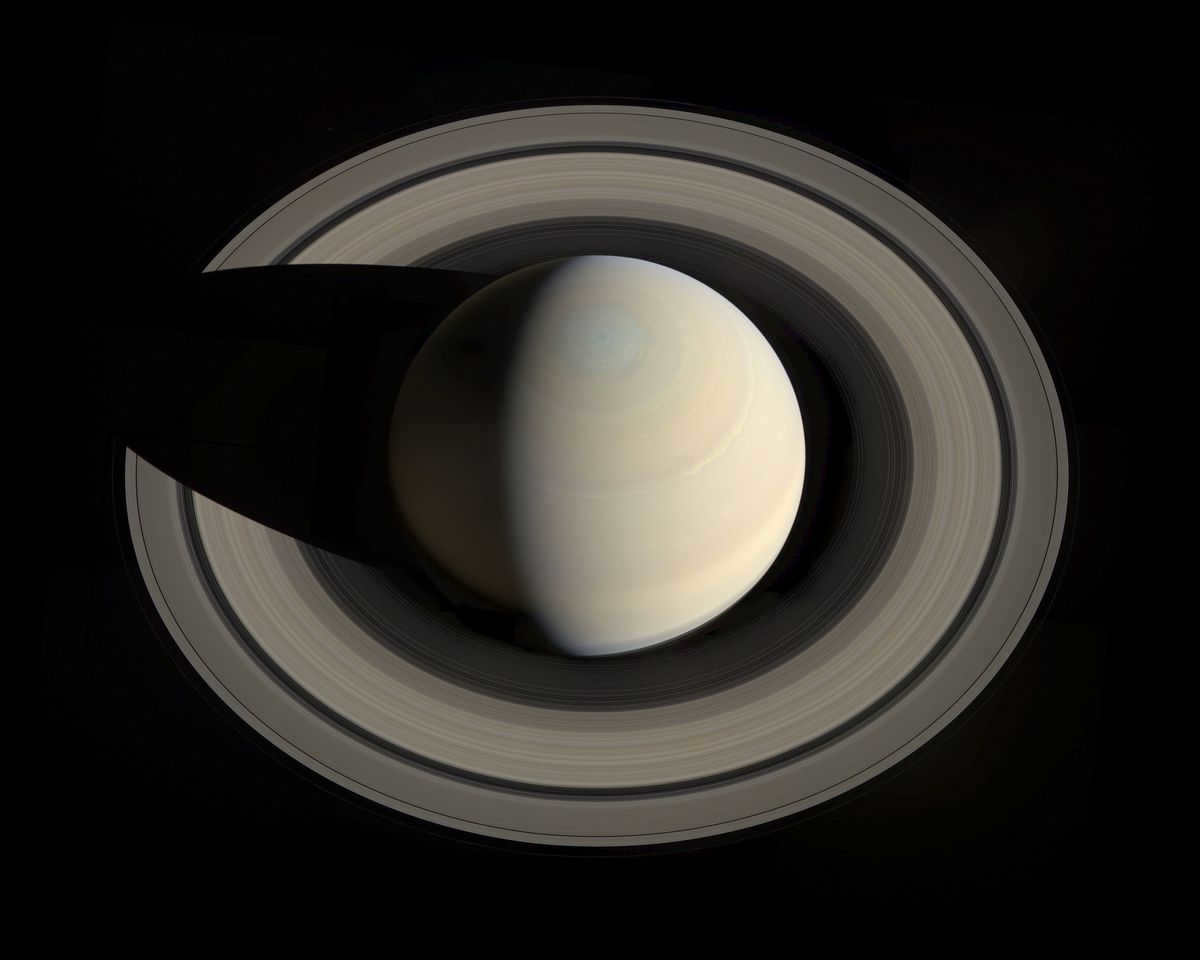
Saturn, a compilation of 8 images taken by the Cassini spacecraft
With its immense size and multitude of moons, Saturn holds the second largest volume and number of satellites among all the planets. It also ranks second in its distance from the Sun compared to other gas giants, with Jupiter taking the lead in both categories. Alongside Uranus and Neptune, Saturn belongs to the group of giant planets. One of the most notable features of Saturn is its magnificent system of rings, which can be easily observed even with a regular telescope.
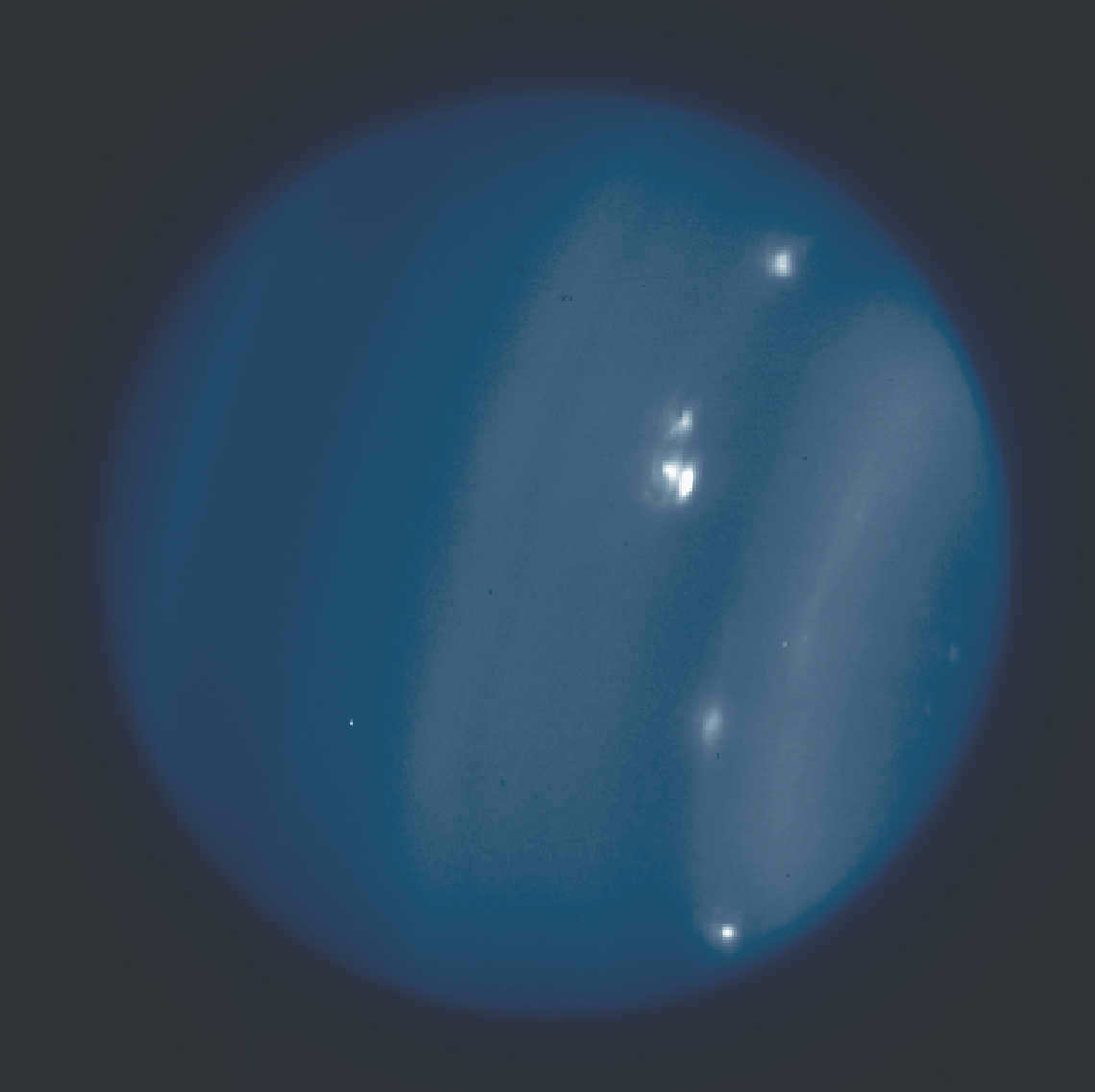
Here is an infrared image of Uranus taken by the KEK telescope.
Similar to Venus, Uranus is a planet that rotates in the opposite direction. What sets Uranus apart is its unique position in relation to its orbit – it is tilted at an angle of 98 degrees. Known as the coldest planet in the solar system, Uranus has reached temperatures as low as -225 degrees Celsius. Additionally, Uranus is accompanied by 27 satellites.
Neptune
Neptune is the eighth and farthest known planet from the Sun in the Solar System. It is the fourth-largest planet by diameter and the third-largest by mass. Among the gaseous planets in the Solar System, Neptune is the most dense. Neptune is 17 times the mass of Earth and is slightly more massive than its near-twin Uranus, which is 15 times the mass of Earth but not as dense. Neptune orbits the Sun once every 164.8 years at an average distance of about 30.1 astronomical units (4.50 billion km). It is named after the Roman god of the sea and has the astronomical symbol ♆, a stylized version of the god Neptune’s trident.
Neptune is not visible to the naked eye and is the only planet in the Solar System found by mathematical prediction rather than by empirical observation. Unexpected changes in the orbit of Uranus led Alexis Bouvard to deduce that its orbit was subject to gravitational perturbation by an unknown planet. Neptune was subsequently observed with a telescope on 23 September 1846 by Johann Galle within a degree of the position predicted by Urbain Le Verrier. Its largest moon, Triton, was discovered shortly thereafter, though none of the planet’s remaining known 14 moons were located telescopically until the 20th century.
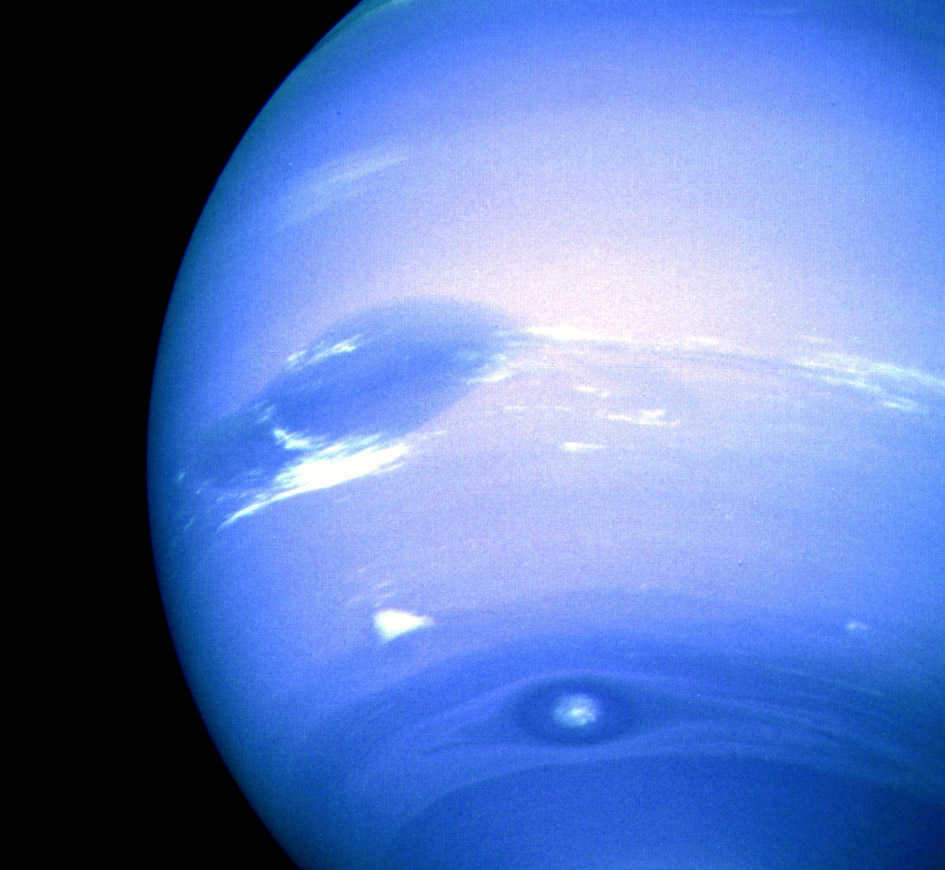
A photo of Neptune taken by Voyager 2 spacecraft.
Neptune is similar to Uranus in terms of composition, and both are often referred to as “ice giants” due to the abundance of ice in their composition. The planet’s atmosphere, like that of other gas giants, consists mainly of hydrogen and helium. The presence of methane in Neptune’s atmosphere gives it its distinct blue color. Known for its incredibly strong winds, reaching speeds of up to 700 km/h, Neptune holds the title for the planet with the strongest winds in the solar system. Additionally, Neptune has a total of 13 satellites.
Comparison of the sizes of planets and stars
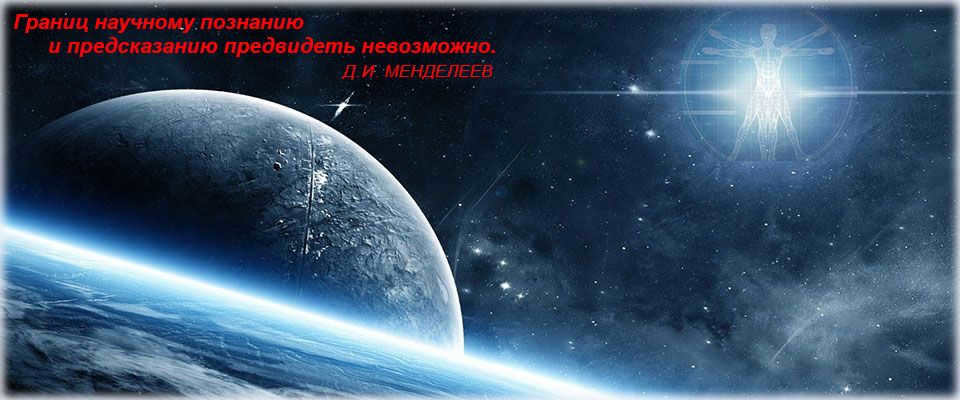

- Home
- Solar System
Solar System
The solar system consists of the central star, the Sun, and all the natural objects in space that orbit around it.
This is the appearance of the Sun when observed through a telescope with dark glass. It reveals the surface structure of the chromosphere, which is the upper layer of the Sun’s atmosphere, as well as prominences, which are emissions of hot plasma, and dark spots, which are breaks in the photosphere and chromosphere that allow us to see deeper layers of the solar atmosphere.
Sun is a G2V spectral class main-sequence star, commonly known as a yellow dwarf.
The estimated duration of the Solar System’s orbit around the Galactic center is approximately 200-220 million years, while the distance from the Sun to the center of the Galaxy measures around 26000 light years. As for the velocity of the Solar System’s motion around the Galactic center, it ranges between 220-230 km/sec.
The Sun accounts for the vast majority of the system’s total mass, approximately 99.866%. In fact, the Sun’s mass is about 750 times greater than the combined mass of all other celestial bodies within the solar system.
Consequently, all objects within our solar system orbit around the Sun as their central point of mass.
The comparison of the size of the planets with the Sun (the Sun is depicted on the left side)
The components of the solar system that revolve around the central star can be categorized into the following elements of the solar system’s structure:
- The Earth group consists of small planets that move in orbits that are nearly circular.
- The asteroid belt acts as a barrier between the minor planets and the giant planets.
- Giant planets possess immense atmospheres.
- The Kuiper Belt is positioned beyond the orbit of Neptune.
- The Oort Cloud, resembling a colossal sphere made up of individual bodies, surrounds the entire solar system and serves as its boundary. Beyond this cloud lies the expanse of galactic space.
1. Terrestrial Group Planets (Inner Planets)
The inner planets, also known as the terrestrial group planets, consist of Mercury, Venus, Earth, and Mars.
Mercury, Venus, Earth, and Mars (from left to right)
All of these planets possess solid surfaces and high densities, primarily composed of silicates and metals. Earth is the largest planet among these. This group of planets is situated closest to the Sun.
2. The Belt of Asteroids
Located between Mars and Jupiter, the asteroid belt lies beyond the group of Earth-like planets and serves as a dividing line between the smaller and larger planets.
Composed primarily of silicates and metals, asteroids share a similar composition to the planets in the Earth group. Asteroids are celestial bodies with a diameter exceeding 30 meters, while smaller bodies are referred to as meteoroids.
The number of large bodies within the asteroid belt is relatively small. There are approximately 200 asteroids with a diameter greater than 100 km, and scientists have identified around 1000 asteroids with a radius exceeding 15 km. Infrared spectrum studies indicate the presence of an additional 700 thousand to 1.7 million asteroids with a diameter of 1 km or more.
Asteroids have varying stellar magnitudes, ranging from 11 m to 19 m, with the majority falling around 16 m.
The total mass of all asteroids in the main belt is about 3.0-10 21 to 3.6-10 21 kg, which constitutes only 4% of the Moon’s mass or 0.06% of the Earth’s mass. The four largest asteroids in the top ten, namely Ceres, Vesta, Pallada, and Hygeia, account for half of this mass. Ceres alone, with a diameter of approximately 950 km, makes up almost a third of the total mass.
The asteroid belt has a vast distance between objects. Although the estimated number of asteroids is several million or even more (depending on the lower size limit), the volume of space occupied by the belt is immense. Consequently, the density of objects in the belt is very low. As a result, the likelihood of a collision or even a random unplanned encounter, such as a spacecraft encountering an asteroid, is currently estimated to be less than one in a billion.
Due to the low level of gravity on their surface, minimal fuel is required for landing and takeoff. Moreover, if we utilize near-Earth asteroids for our development efforts, the cost of transporting resources from these asteroids to Earth will be significantly reduced.
Asteroids hold great potential as sources of valuable resources. For instance, they contain water in the form of ice, which can be used to obtain oxygen for breathing and hydrogen for space fuel. Additionally, asteroids are rich in various rare metals and minerals, including iron, nickel, titanium, cobalt, and platinum. In smaller quantities, they also contain other elements such as manganese, molybdenum, and rhodium.
Indeed, the majority of elements that are more massive than iron and are currently being extracted from the Earth’s surface originated from asteroids that crashed into our planet during the period of intense bombardment. These asteroids hold an abundant supply of resources and are almost limitless in their potential. Take, for instance, a tiny M-class asteroid measuring 1 km in diameter, which may hold approximately 2 billion tons of iron-nickel ore.
3. Giant Planets Beyond the Asteroid Belt
Beyond the asteroid belt, there are four planets – Jupiter, Saturn, Uranus, and Neptune. These planets are known as the outer planets and belong to the second group of planets, which are the farthest from the Sun. In terms of size, they are significantly larger than Earth.
Jupiter, Saturn, Uranus, and Neptune (left to right)
For instance, Jupiter has a mass that is more than 300 times that of Earth. Excluding the Sun’s mass, these planets account for 99% of the remaining mass in the solar system, with Jupiter and Saturn making up the majority – approximately 90%.
The giant planets differ greatly from the terrestrial planets in terms of their composition and structure. Rather than being made up of heavy elements, they are composed mainly of gas, primarily hydrogen and helium, similar to the Sun and other stars. This is why they are also referred to as gas planets.
The satellites of the planets, which orbit around them, are also part of the solar system. Currently, there are a total of 415 satellites.
The Moon is the constant satellite of the Earth. Mars has two satellites, Phobos and Deimos. Jupiter has 67 satellites, while Saturn has 62. Uranus has 27 satellites. Surprisingly, Venus and Mercury do not have any satellites. However, even the “dwarf” planets Pluto and Erida have their own satellites. Pluto has Charon, and Erida has Dysnomia. The classification of Charon as a satellite of Pluto is still a matter of debate among astronomers. Some argue that the Pluto – Charon system should be considered a double planet. Additionally, some asteroids also have satellites. Ganymede, a satellite of Jupiter, holds the title for being the largest satellite, while Saturn’s satellite Titan is not far behind.
Aside from planets and moons, the Solar System is traversed by numerous small objects, such as comets, an immense quantity of meteorites, gas-dust particles, dispersed atoms of various elements, streams of atomic particles, and more.
Located beyond the orbit of Neptune, lies an additional zone of small celestial objects known as the Kuiper belt. This belt is considerably wider, measuring 20 times the width of the asteroid belt, and is also 20 to 200 times more massive.
Objects within the Kuiper belt primarily consist of volatile substances, commonly referred to as ice, such as methane, ammonia, and water.
Within this belt, we find Pluto, which has since been reclassified as a dwarf planet, no longer holding the status of a full-fledged planet.
Among the Kuiper belt’s inhabitants are other dwarf planets that closely resemble Pluto. In 2008, these celestial bodies were officially named plutoids.
5. The Oort Cloud
The Oort Cloud is a theoretical spherical area in the solar system that acts as a reservoir for long-period comets.
The existence of the Oort cloud has not been directly proven, but there is considerable evidence supporting its presence. According to different calculations, the estimated distance from the Sun to the outer edge of the Oort cloud ranges from 1 to 2 light years.
The Solar System is surrounded by the Oort Cloud, a vast shell resembling a balloon, which is home to trillions of comet nuclei. When these comets get closer to the Sun, the heat causes the ice to turn into vapor. The solid part of the comet then orbits the Sun and either returns to the Kuiper belt or the Oort Cloud. Meanwhile, the gaseous matter that is vaporized mostly becomes part of the Sun’s atmosphere, although some of it enters the atmospheres of the giant planets.
The solar system’s outer regions
Movement of celestial bodies in the solar system
The majority of large objects that orbit the Sun follow a similar path known as the ecliptic plane. However, comets and Kuiper Belt objects often have more significant deviations from this plane.
Orbiting the Sun
All planets and most other celestial objects travel around the Sun in the same direction as the Sun’s rotation (counterclockwise when observed from the Sun’s north pole). While there are exceptions, such as Halley’s Comet, the planet Mercury holds the record for the fastest angular velocity, completing a full revolution around the Sun in just 88 Earth days. On the other end of the spectrum, the most distant planet, Neptune, has a rotation period of 165 Earth years.
The angle between a planet’s rotation axis and the perpendicular to the plane of its orbit (or, equivalently, between the plane of the planet’s equator and the plane of the orbit) is known as the inclination of the planet’s rotation axis.
The planets’ rotation around their axis
The Milky Way galaxy includes the solar system.
According to astronomers’ calculations, the gravitational field of the Sun is dominant over the gravitational forces of the nearby stars up to a distance of approximately two light-years (125,000 astronomical units). This marks the boundary of the Solar System.
We still have a lot to learn about the majority of our solar system.
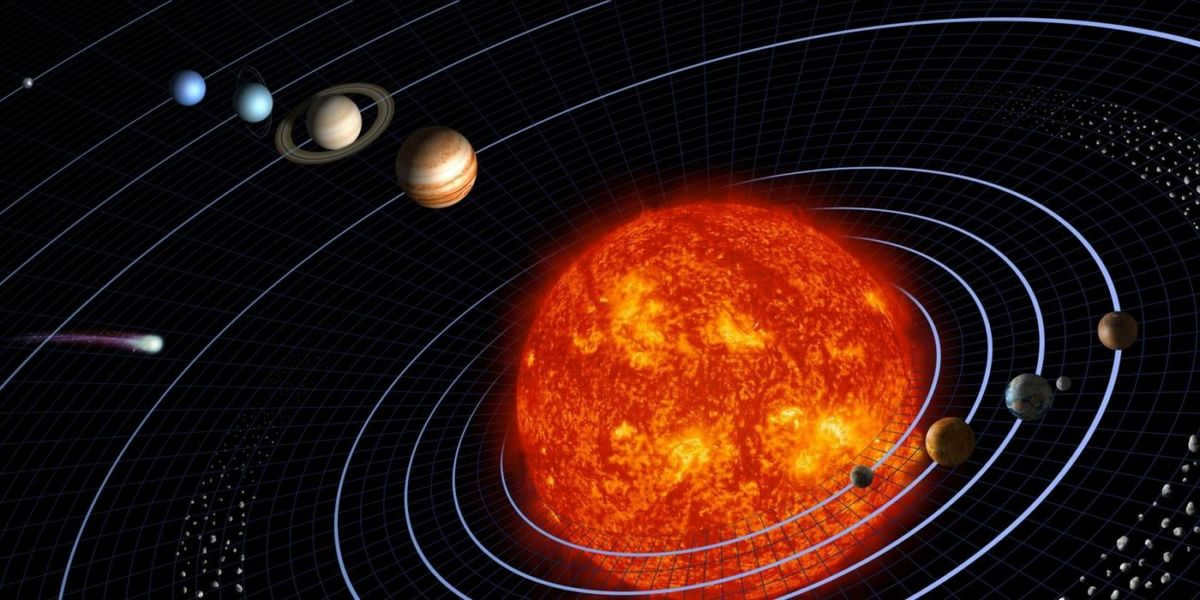
The Solar System is composed of the Sun and all the other celestial objects that orbit around it, including planets, moons, dwarf planets, asteroids, Kuiper Belt objects, and comets.
When we talk about the solar system, we can also be referring to the collection of celestial bodies that orbit a different star, which are called extrasolar planets. However, in this article, we are specifically referring to the system that includes the Sun and the Earth.
The size of the Solar System is measured based on the distance between the Sun and the Earth, which is known as an “astronomical unit” (AU). One AU is equivalent to approximately 150 million kilometers. It is estimated that the distance from the Sun to the outer edge of the Solar System, where the solar magnetic field ends and interstellar space begins, is around 86-100 AU.
Discovered in July 2005, Erida is the farthest known object in orbit around the Sun. This dwarf planet is located approximately 97 AU away from the Sun. Another planetoid, known as Sedna, is situated at the outer edge of the solar system, about 90 AU away. However, at its farthest point in orbit, Sedna will reach a distance of about 900 AU.
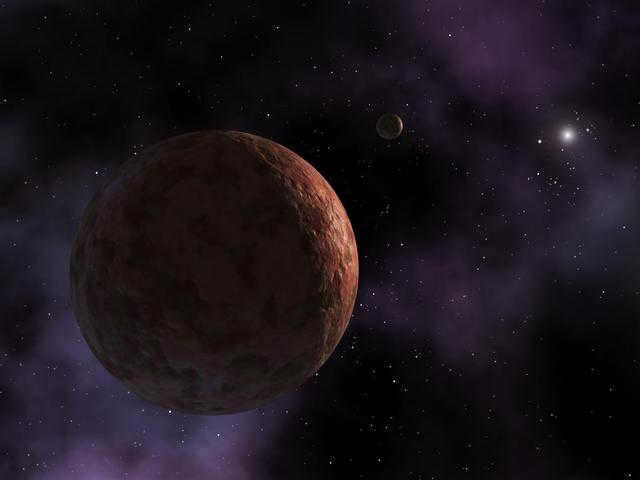
Nevertheless, the comets with the longest periods are the ones that cover the greatest distance from the Sun; their orbits are incredibly eccentric, allowing them to reach distances of 50,000 AU or even more! These particular comets have their origins in the Oort cloud, an enormous spherical region comprising billions of comets.
For a long time, our solar system was the only known planetary system. However, this changed in 1995 when astronomers made a groundbreaking discovery: a planet approximately 0.6 times the size of Jupiter orbiting the star 51 Pegasus in the constellation Pegasus. In comparison, Jupiter, which is the most massive and largest planet in our solar system.
Soon after, astronomers also found a planet orbiting the star 70 Virgo in the constellation Virgo. This planet has a mass of about 8.1 times that of Jupiter. Additionally, another planet with a mass approximately 3.5 times that of Jupiter was discovered orbiting the star 47 of the Big Dipper.
Since that time, astronomers have made the discovery of the existence of forming planets and debris disks revolving around a vast number of stars. The majority of astronomers hold the belief that there is an exceedingly large quantity of solar systems in the universe.
The sun and the solar wind
The sun is a star of moderate size and brightness. The hot, dense Sun undergoes a process of converting hydrogen into helium, which produces solar rays and other forms of radiation.
Despite burning 600 million tons of hydrogen per second through nuclear fusion, the Sun is of such great mass that it will continue to emit such a brilliant light for another 6 billion years! It is this remarkable stability that has allowed for the evolution and survival of life on Earth.
Sun’s Dynamic Behavior: Solar Activity
Despite its overall stability, the Sun exhibits an incredibly active nature, with the appearance and disappearance of sunspots, surrounded by intense magnetic fields, occurring approximately every 11 years. These sunspots, along with sudden particle explosions, contribute to the phenomenon of auroras on Earth and interference with radio signals. Moreover, the Sun continuously emits a stream of protons, electrons, and ions, collectively known as the solar wind, which travels throughout the solar system. This solar wind plays a crucial role in the formation of comet tails and leaves its traces on the lunar soil, as evidenced by the samples brought back to Earth by the American Apollo missions.
Furthermore, solar activity has a significant impact on the heliopause, which astronomers consider to be the boundary separating the solar system from interstellar space. The heliopause is a dynamic region that expands and contracts due to the ever-changing speed and pressure of the solar wind.
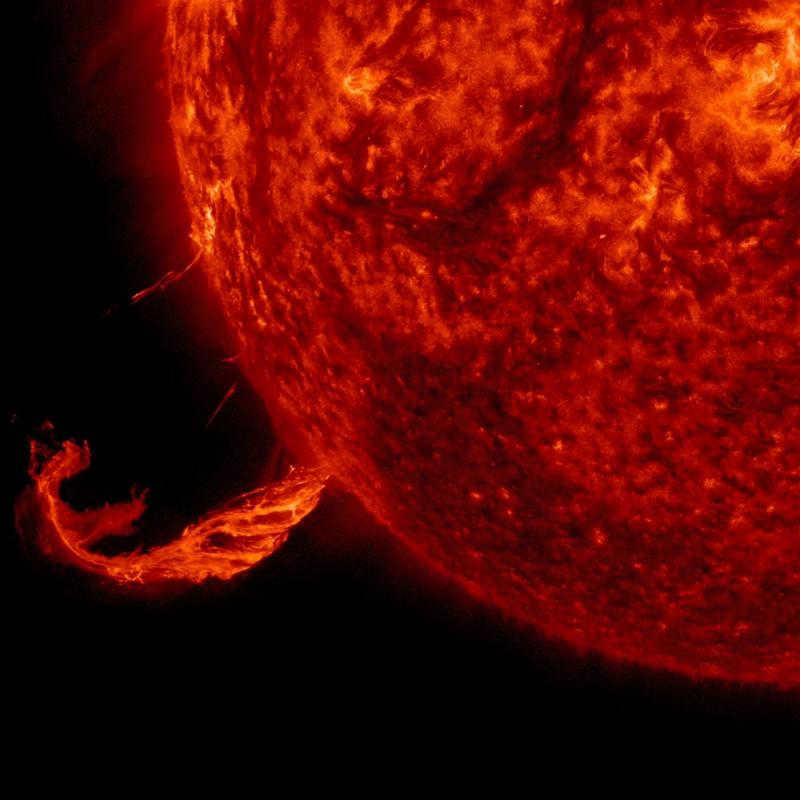

The Solar System’s Planets
The International Astronomical Union (IAU), the organization responsible for the official names of objects in the solar system, now recognizes a total of eight major planets. These planets can be grouped into two categories:
- The inner planets, also known as the telluric planets, include Mercury, Venus, Earth, and Mars.
- The outer planets, also known as the gas giants, include Jupiter, Saturn, Uranus, and Neptune.
The telluric planets are relatively small and are primarily composed of rock and iron. The gas giants, on the other hand, are much larger and consist mainly of ice, helium, and hydrogen. In 2006, the IAU designated Pluto, which was previously considered the ninth planet, as a dwarf planet. This decision was met with opposition from some astronomers who disagreed with the new definition of what constitutes a planet.
The International Astronomical Union (IAU) defines a “classical” planet as a celestial body that orbits the Sun, has a spherical shape resulting from its own gravitational pull, and is the dominant object in its vicinity, having absorbed all other objects. On the other hand, a dwarf planet is also a spherical object that orbits the Sun but does not have enough mass to engulf other objects in its vicinity.
Mercury
Mercury is the closest planet to the Sun in our solar system. It is named after the Roman god Mercury, known for his speed and agility. With a diameter of about 4,879 kilometers, Mercury is the smallest planet in the solar system, even smaller than some moons. It has a rocky surface with many craters and is covered in a thin layer of dust.
Mercury has a highly elliptical orbit, meaning it is not a perfect circle but more oval-shaped. This causes extreme temperatures on the planet, with the side facing the Sun reaching temperatures of up to 800 degrees Fahrenheit (427 degrees Celsius), while the side facing away from the Sun can drop to -290 degrees Fahrenheit (-180 degrees Celsius). Despite these extreme temperatures, there is evidence to suggest that water ice may exist in the permanently shadowed craters at the poles of Mercury.
Mercury has a very thin atmosphere, composed mostly of helium and traces of potassium, sodium, and oxygen. Because of its proximity to the Sun, the planet is bombarded by solar radiation and solar wind, stripping away its atmosphere over time.
Mercury has been visited by only one spacecraft, NASA’s MESSENGER, which orbited the planet from 2011 to 2015. The mission provided valuable data and images of the planet, giving scientists a better understanding of its geology, magnetic field, and surface composition.
In conclusion, Mercury is a fascinating planet with its close proximity to the Sun and extreme temperatures. Further exploration and study of this small rocky planet will continue to provide valuable insights into the formation and evolution of our solar system.

Mercury is surprisingly compact, and this seems to be because of its exceptionally large iron core. The surface of Mercury bears evidence of asteroid impacts from its early days, thanks to its thin atmosphere.
Venus
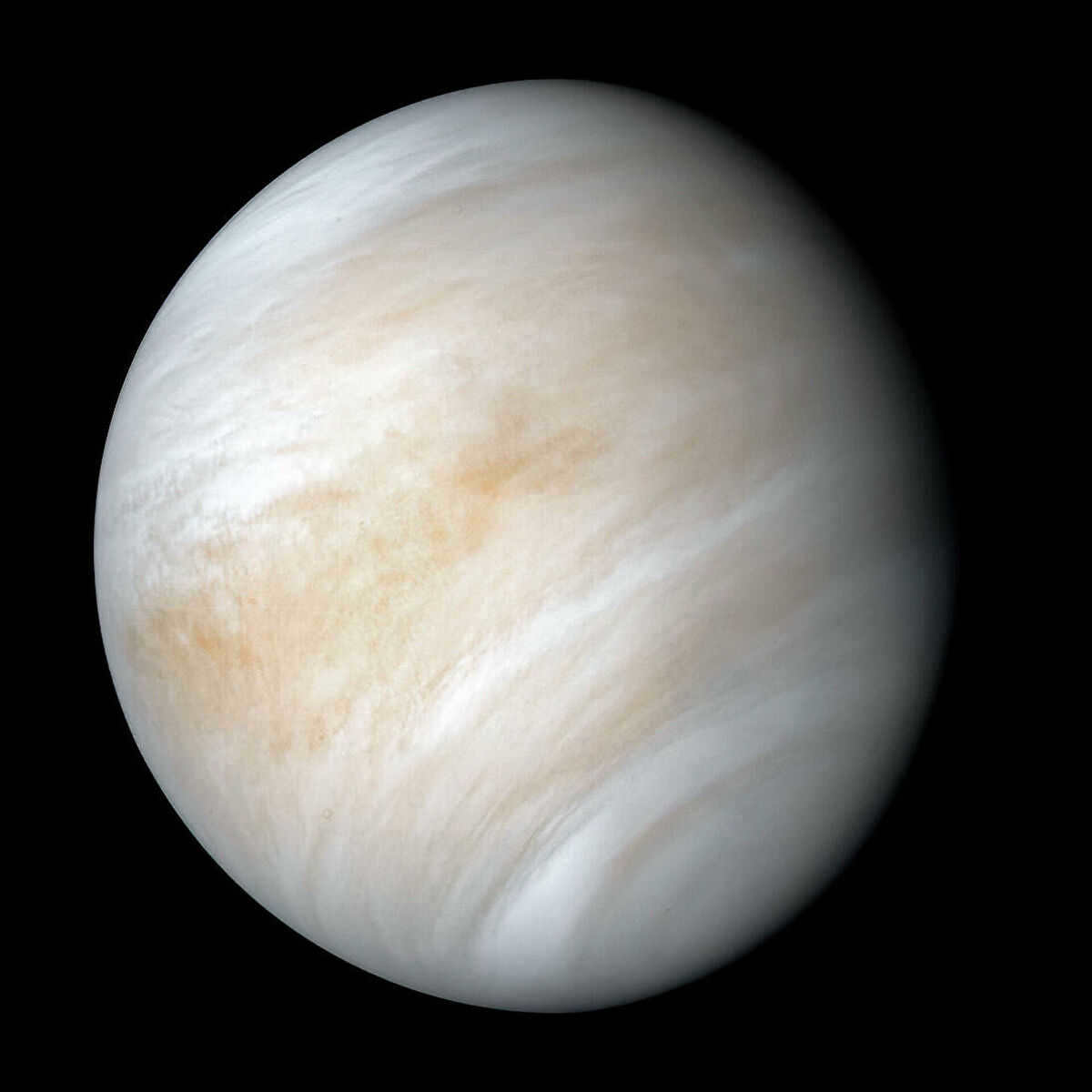
Venus possesses a carbon dioxide-filled atmosphere that is 90 times denser than that of Earth, resulting in a notable greenhouse effect. As a consequence, it experiences an astonishingly high temperature, making it the hottest planet in the solar system, with temperatures reaching approximately 477 °C!
Planet Earth
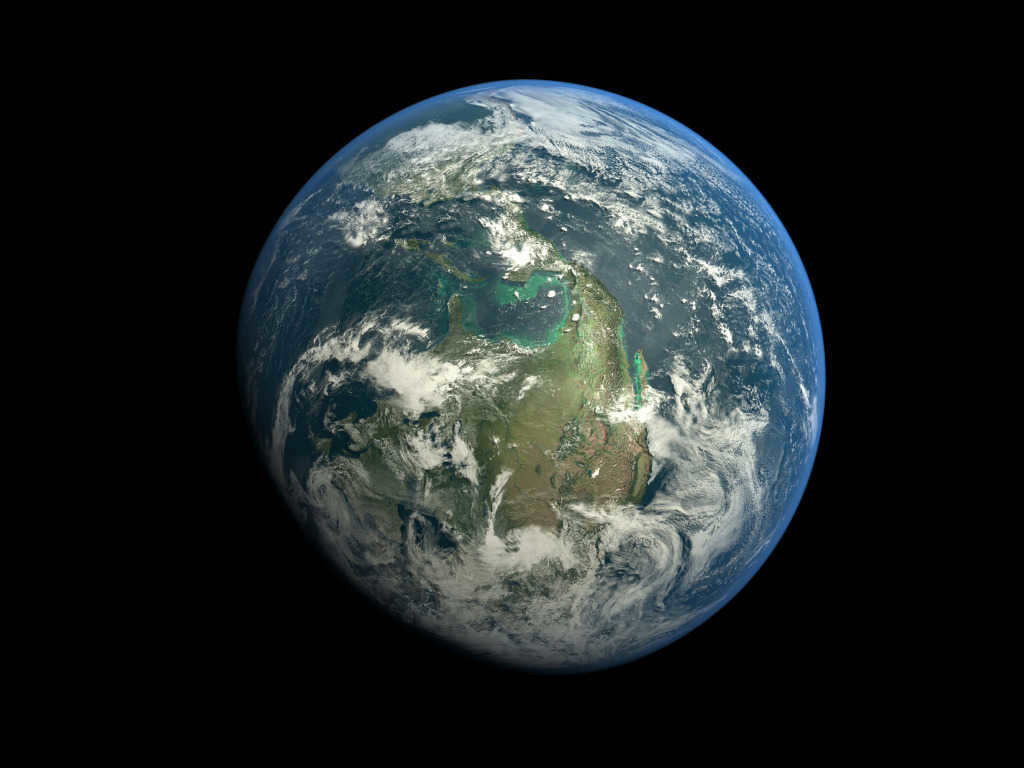
Earth is the sole recognized planet that possesses an overflowing quantity of liquid water and sustains an abundance of life. Furthermore, it stands as the planet that is most familiar to humanity. For centuries, it has been meticulously scrutinized, even in the most far-flung regions of the globe.
The lunar sphere
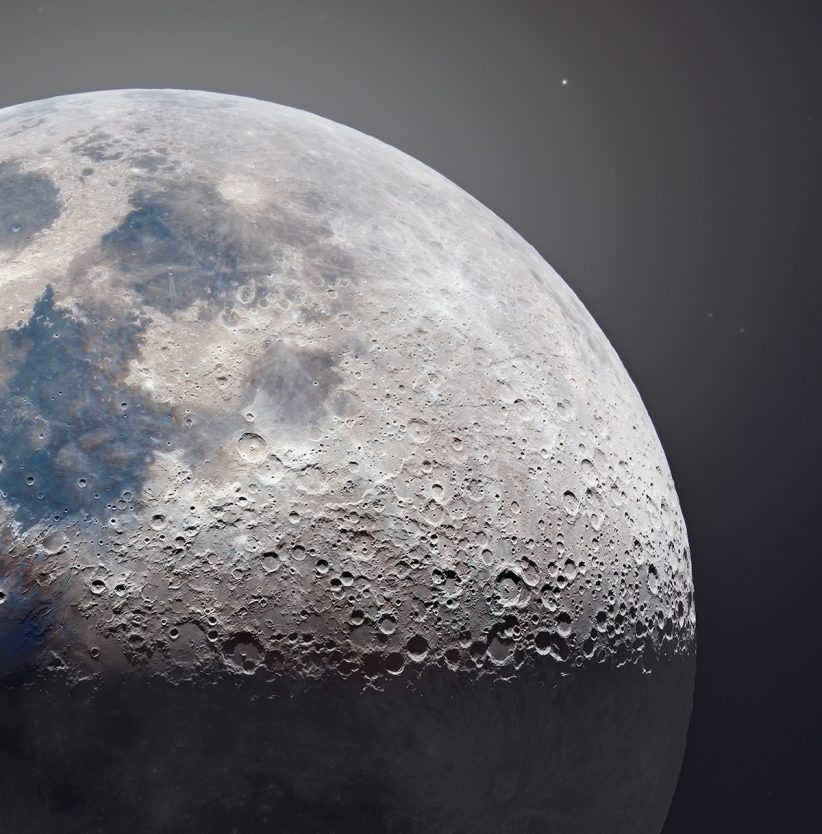
The Earth’s natural satellite is called the moon. It is in such close proximity to our planet that a total of 12 individuals have had the opportunity to step foot on its surface. Furthermore, the moon plays a vital role in sustaining life on Earth, as we are greatly indebted to its presence.
Mars
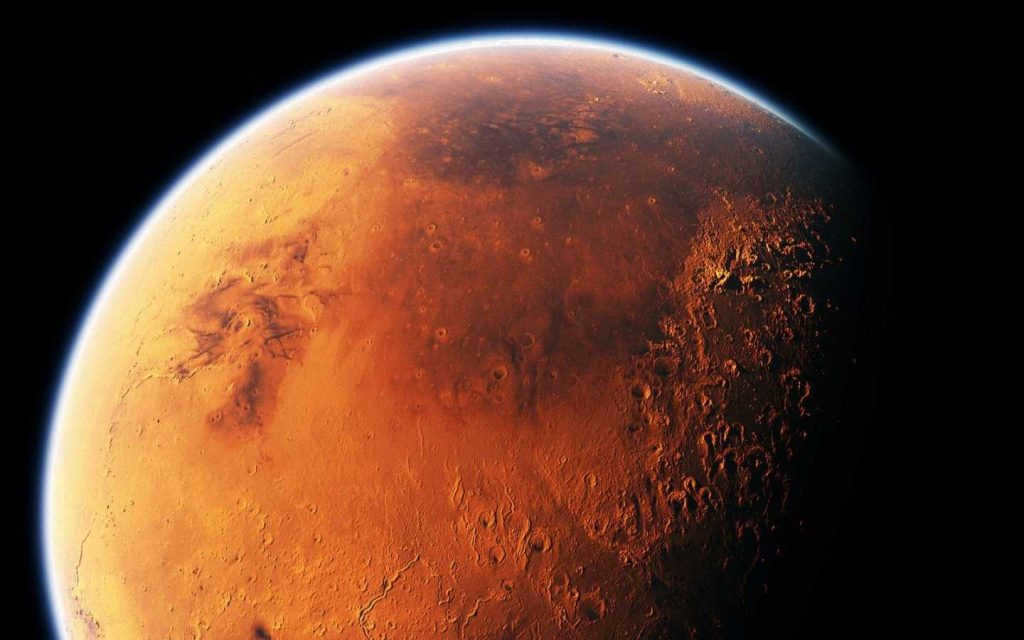
Scientists leading NASA’s Mars Exploration Rover mission have officially confirmed the presence of liquid water on the Martian surface in 2004!
Prior to this discovery, experts had theorized the existence of water on Mars due to the erosion patterns observed on its surface, which closely resemble those found on Earth. Presently, Mars is a frigid and arid planet with a thin carbon dioxide atmosphere, hosting frozen water and carbon dioxide at its poles. However, evidence suggests that pockets of water are still emerging from beneath the Martian crust and reaching the surface in certain locations.
Jupiter
Jupiter, also known as the largest planet in our solar system, is a gas giant that orbits the Sun. It is named after the Roman god Jupiter, the king of the gods. With a diameter of about 86,881 miles, Jupiter is more than 11 times the diameter of Earth. It is composed mostly of hydrogen and helium, with small amounts of other elements.
Jupiter is known for its distinctive bands of clouds, which are made up of different gases and particles. The bands are caused by the planet’s fast rotation, which completes a full rotation in just under 10 hours. These bands create a unique and vibrant atmosphere, with swirling storms and massive hurricanes.
One of the most famous features of Jupiter is its Great Red Spot, a giant storm that has been raging for hundreds of years. The Great Red Spot is about twice the size of Earth and is thought to be a high-pressure system. Scientists still do not fully understand how this storm has been able to persist for so long.
Jupiter also has a strong magnetic field, which is about 20,000 times stronger than Earth’s. This magnetic field creates powerful auroras, similar to Earth’s Northern and Southern Lights, near the planet’s poles.
Jupiter has a total of 79 known moons, the largest of which is Ganymede. Ganymede is even larger than the planet Mercury and is the only moon in the solar system to have its own magnetic field.
Overall, Jupiter is a fascinating planet that continues to intrigue scientists and astronomers with its unique features and mysteries.
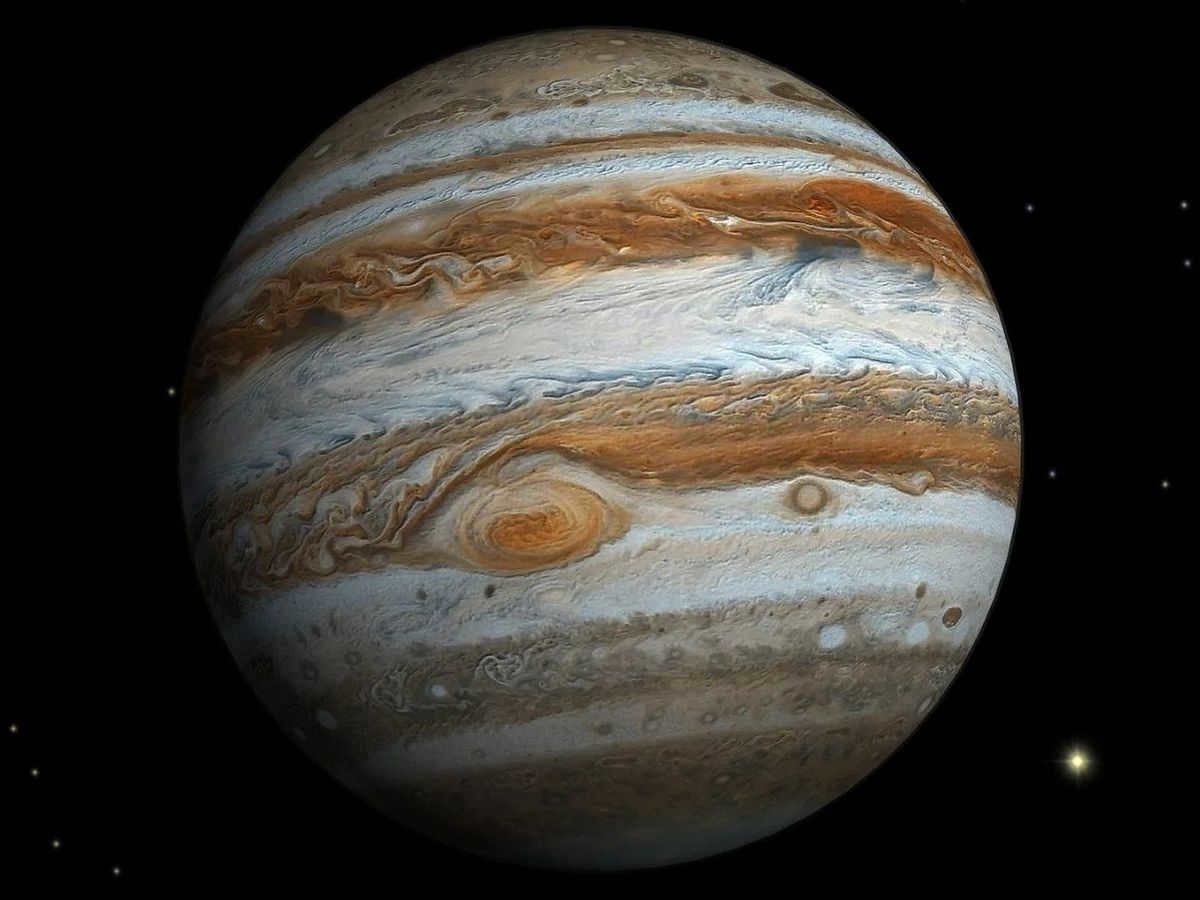
Jupiter, the largest planet in our solar system, boasts a helium and hydrogen-filled atmosphere adorned with vibrant clouds. Its immense magnetosphere, rings, and satellites establish it as a true planetary marvel. Among Jupiter’s notable satellites is Io, whose volcanic activity renders its surface the hottest within our solar system. Multiple satellites of Jupiter possess atmospheres, with at least three likely featuring liquid or partially frozen water. Europa, another of Jupiter’s satellites, potentially harbors an entire ocean of liquid water concealed beneath its icy crust!
The distant satellite Callisto exhibits a particularly ancient appearance when compared to its neighboring Jupiter. In contrast, Ganymede, the largest of Jupiter’s satellites, surpasses the size of the planet Mercury!
The planet Saturn
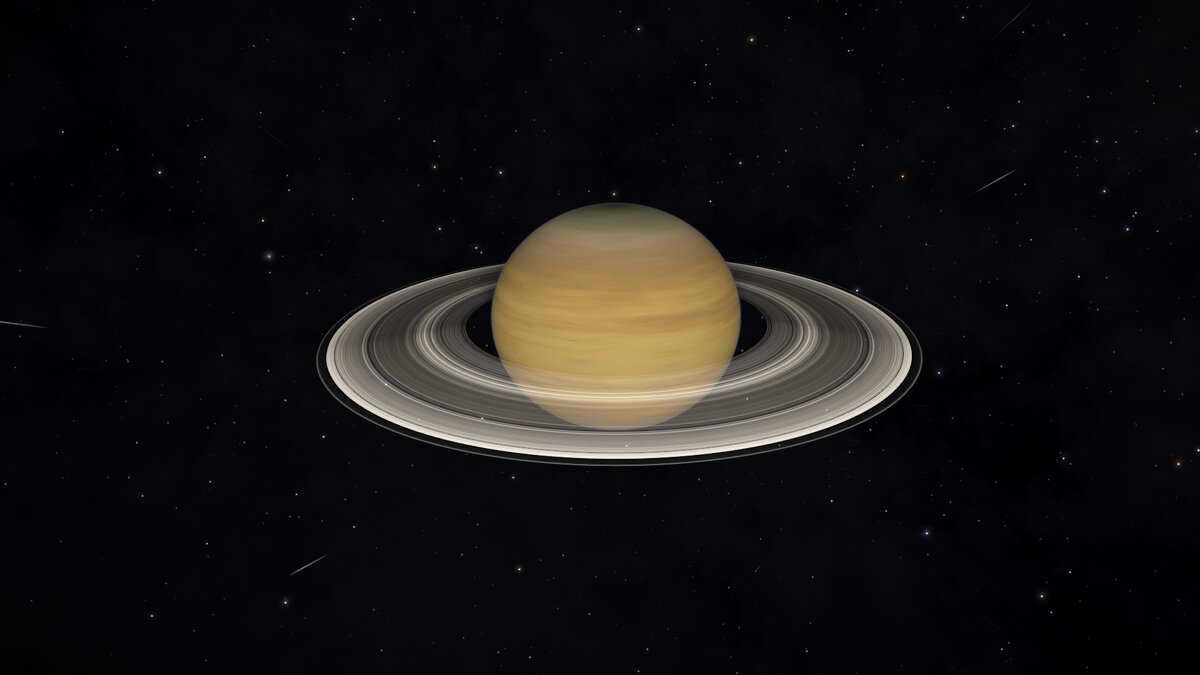
Saturn, the rival of Jupiter, boasts a much more intricate ring system and an equal number of satellites. Among Saturn’s satellites, Titan stands out for having the densest atmosphere among all satellites in the entire solar system. Another satellite of Saturn, Enceladus, is known for its geysers of liquid water. In contrast, Uranus and Neptune have a relatively lower amount of hydrogen compared to Jupiter and Saturn. Uranus, which also possesses rings, is particularly unique for its rotation of 98 degrees in the plane of its orbit.
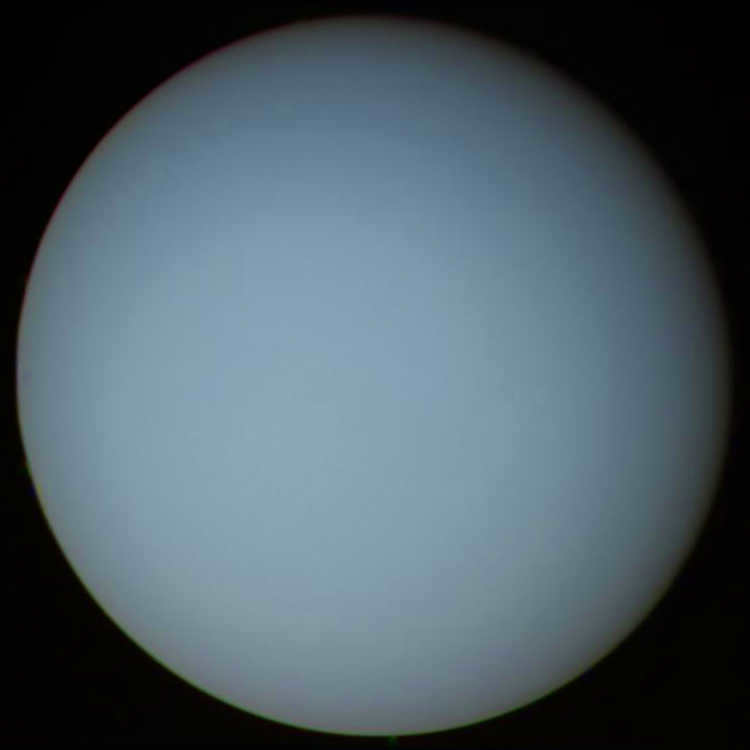
Uranus, the seventh planet in our solar system, is a magnificent blue gas giant. While much remains unknown about its internal composition, we do know that it differs from both Jupiter and Saturn. The striking blue hue of Uranus is primarily attributed to its high concentration of methane gas.
Neptune
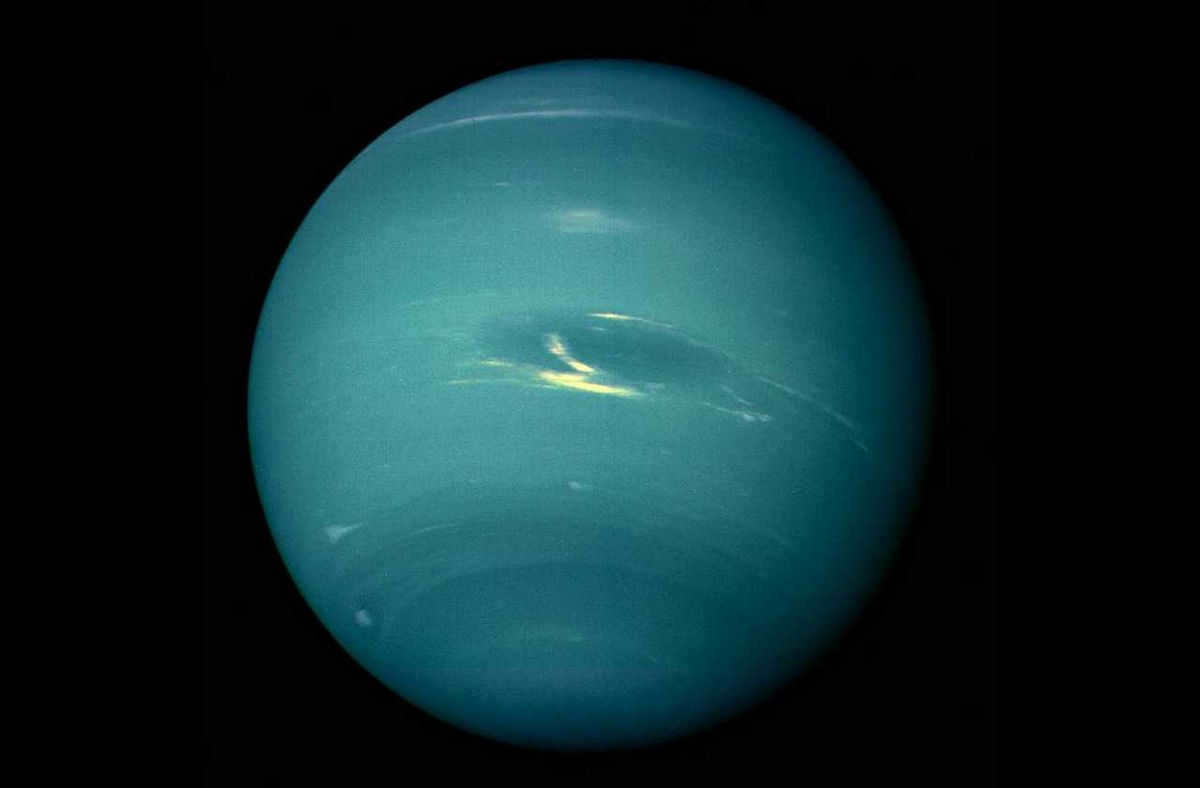
The final gas giant in our solar system is visible only through a telescope. According to scientists, its internal makeup is comparable to that of Uranus, as its blue hue is a result of the presence of methane.
Additional celestial bodies in orbit
The International Astronomical Union (IAU) recognizes a number of dwarf planets, such as Pluto, Erid, Makemake, Haumea, and Ceres. These celestial bodies are classified as dwarf planets by the IAU because they have a rounded shape resulting from their own gravitational pull and are unable to clear their orbit of other objects, unlike regular planets.
Pluto, Erida, Makemake, and Haumea consist of layers of ice surrounding a rocky core. They orbit within the Kuiper belt, which is located beyond Neptune and is home to numerous small frozen bodies. These dwarf planets are part of a group called plutoids.
Ceres is classified as a dwarf planet due to its spherical shape and its location in the asteroid belt, a region that lies between the orbits of Mars and Jupiter and is home to numerous small rocky objects. Ceres possesses a rocky nucleus at its center, which is enveloped by a mantle consisting of a combination of rock and ice. Similar to asteroids, dwarf planets are recognized as minor planets by the International Astronomical Union (IAU) and are assigned names and numerical designations for identification purposes.
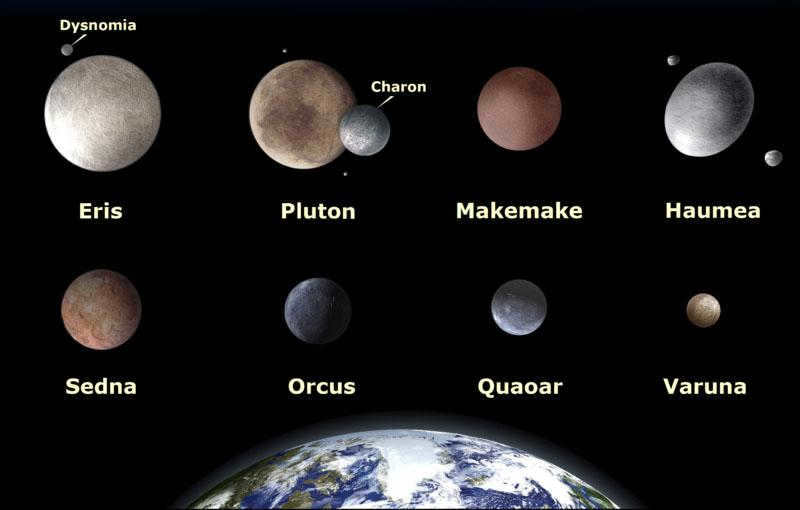
Asteroids, meteors, and meteoroids
Asteroids are small celestial bodies composed of rock that primarily orbit the space between Mars and Jupiter. There are thousands of asteroids, varying in size from 530 km in length (approximately half the size of Ceres) to minuscule grains of dust! Certain asteroids, influenced by external factors, can deviate from their regular orbits and approach closer to the Sun.
If these objects’ orbits intersect with the Earth’s orbit, they are referred to as meteoroids. When they are visible at night as shooting stars, they are known as meteors, and the fragments that are discovered on Earth are called meteorites. The scientific research conducted on meteorites has provided us with a wealth of information about the conditions that existed in our early solar system. The surfaces of Mercury, Mars, and several moons (including our Moon) exhibit the impacts of asteroids and comets throughout the solar system’s history. On Earth, these impacts have been erased by erosion, with the exception of a few recently identified collisions.
Comets in the Solar System
Some meteors and other interplanetary dust also have their origins in comets, which are made up of clusters of frozen dust and gas that vary in size from 5 to 10 kilometers in diameter. Comets orbit at such a distance from the Sun that they can be influenced by the orbits of other stars, causing them to be sent back into the solar system. As they get closer to the Sun, comets release their gas and dust, creating stunning manes and tails! Due to the immense gravitational field of Jupiter, comets can sometimes have much smaller orbits. The most well-known example of this is Halley’s Comet, which makes its return to the Sun every 75 years. The last time it came close to the Sun was in 1986. In July 1994, fragments from comet Shoemaker-Levy 9 collided with Jupiter’s dense atmosphere at speeds reaching up to 210,000 km/h!
Upon impact, the incredible kinetic energy of the fragments was unleashed in powerful explosions, some of which formed fireballs larger than the Earth!
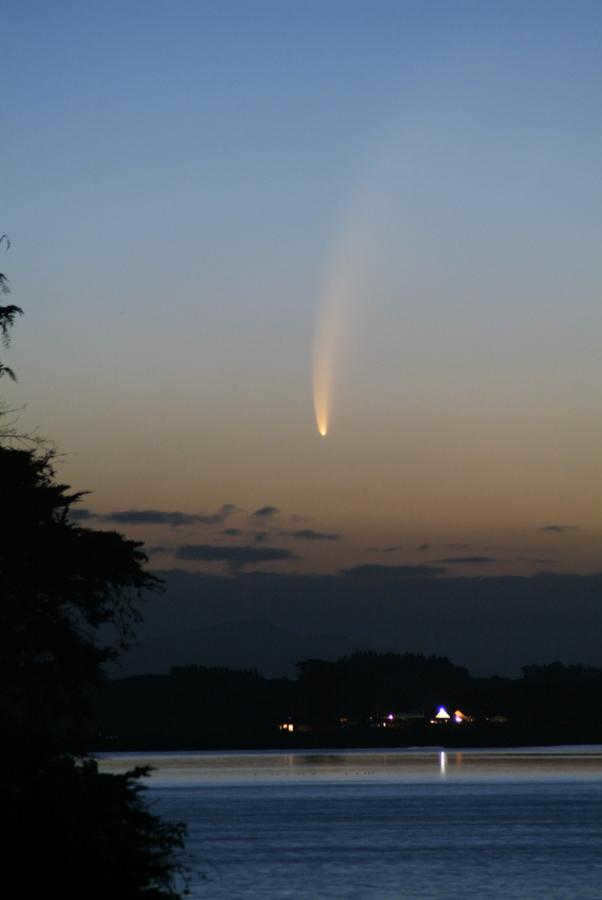
The Oort Cloud
The Oort Cloud is a theoretical area positioned halfway between the Sun and the heliopause, the boundary where the solar wind is blocked by the interstellar medium. Scientists propose that the presence of the Oort Cloud, named after the astronomer Jan Oort, provides an explanation for the extended orbital periods of certain comets. Particles of dust and ice can remain within the Oort Cloud for thousands of years. Occasionally, neighboring stars come close enough to the solar system that their gravitational pull propels an object out of the Oort Cloud and into orbit around the Sun.
In March 2004, astronomers made the first confirmed observation of the Oort Cloud. They identified a planetoid measuring approximately 1,700 kilometers in diameter and named it Sedna, after a sea goddess in Inuit mythology. Sedna is located roughly 13 billion kilometers away from the Sun.
There are numerous objects in the solar system that are not located in the asteroid belt, Kuiper cloud, or Oort cloud. Among these objects are comets that have a one-time trajectory and will not return to the Sun. These comets have left their mark on the surfaces of planetary satellites through impacts.
Solar Rings
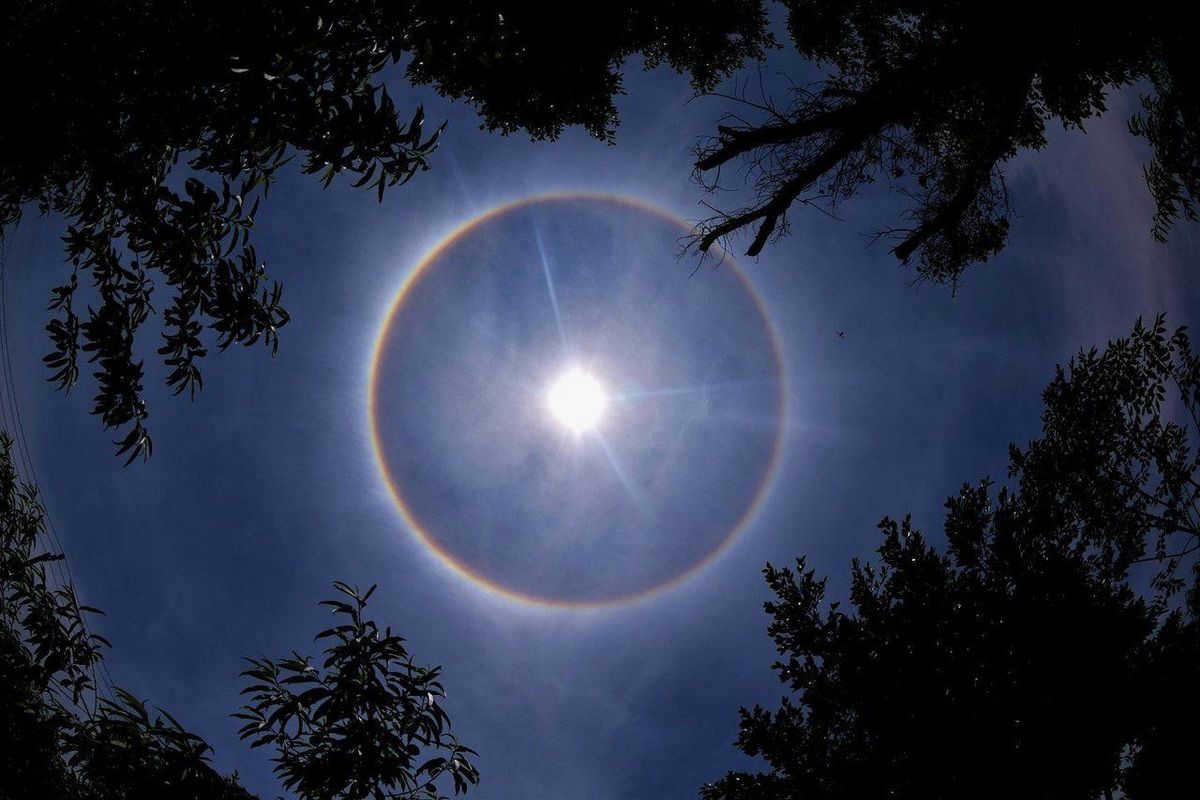
Scientists have recently made an intriguing discovery that the Sun is surrounded by a series of rings composed of interplanetary dust. For many years, it has been common knowledge that one of these rings, which exists between the planets Jupiter and Mars, is the source of the zodiacal light – a faint glow that can be seen in the east before sunrise and in the west after sunset.
However, what is even more fascinating is the revelation that in 1983, another ring was found just two solar diameters away from the Sun.
The movement of celestial bodies and their moons
When observing the solar system from a vantage point above Earth’s northern pole, the apparent motion of the planets around the Sun is in opposite directions. Except for Venus, Uranus, and the dwarf planet Pluto, all planets revolve around their axes in the same direction.
Orbits of the Planets
The planetary orbits within our solar system are mostly flat, with only Mercury having a slightly inclined orbit. However, the dwarf planets Pluto and Erida have highly inclined orbits compared to the main plane of the solar system. Pluto’s orbit is inclined at 17.2 degrees, while Erida’s orbit is inclined at 44 degrees. Both Pluto and Erida also have elliptical orbits, with Pluto’s orbit occasionally bringing it closer to the Sun than Neptune. During its closest approach to the Sun, Erida even crosses within Pluto’s orbit, although it remains well beyond Neptune’s orbit.
Satellite systems generally exhibit similar behavior to their respective home planets and move in the opposite direction. However, there are exceptions to this rule. For example, Jupiter, Saturn, Uranus, and Neptune have some satellites that move in a retrograde orbit, meaning they move clockwise rather than counterclockwise. Additionally, some satellites have highly elliptical orbits.
Neptune also has clusters of planetesimals that share its orbit. Certain satellites of Saturn have likewise done so, with smaller bodies occupying various parts of the same orbits as the satellites. Long-period comets exhibit a roughly spherical distribution of their orbits around the Sun, while the majority of short-period comets seem to originate from the Kuiper belt.
There are some notable phenomena within this collection of movements: Mercury completes three rotations on its axis during two revolutions around the Sun. Jupiter’s three Galilean satellites have periods in a ratio of 4:2:1. Some objects within the Kuiper belt, including Pluto, revolve around the Sun in a 2:3 ratio to the orbit of Neptune. These and other instances illustrate the delicate equilibrium of forces that is established within a gravitational system comprising numerous bodies.
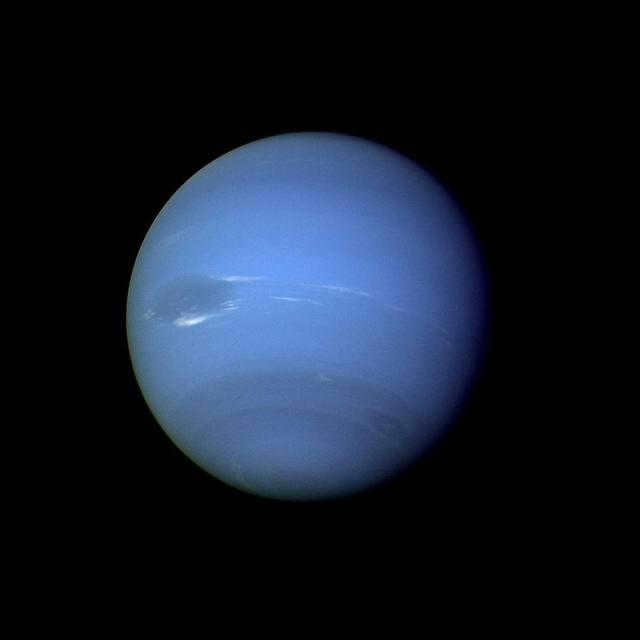
The origin of our solar system
Although the objects within our solar system may have distinct characteristics, it is highly probable that they share a common origin. It is unlikely that these celestial bodies originated from other stars or interstellar space, as they seem to have formed simultaneously.
In the quest to understand the origins of our solar system, early theories proposed by renowned figures such as German philosopher Emmanuel Kant and French astronomer Pierre Simon de Laplace suggested that a cloud of gas exploded and transformed into rings, which then condensed to give birth to planets. However, concerns about the stability of these rings have prompted scientists to explore alternative explanations, including catastrophic scenarios like the possibility of our Sun nearing another star. Nevertheless, these encounters are exceedingly uncommon, and it seems more likely that the dispersal of hot gases and disrupted tides would prevent condensation and planet formation.
According to current theories, the formation of the solar system and the creation of the Sun are interconnected, dating back approximately 4.6 billion years ago. It is believed that the fragmentation and gravitational collapse of an interstellar cloud composed of gas and dust, potentially triggered by a nearby supernova event, played a role in the formation of an early solar nebula. The Sun is thought to have originated in the most densely concentrated region of this nebula.
The intense heat in the vicinity of the Sun presents challenges for the formation of dense materials like silicates. This could explain why a planet like Mercury, with a relatively thin silicate crust and a disproportionately large iron core, exists in close proximity to the Sun. It is hypothesized that the central region of the solar nebula provided a favorable environment for the aggregation of iron dust and vapor, while lighter silicates had a harder time coming together.
An unlimited amount of planets
Far away from the core of the solar nebula, gases transform into solids similar to the ones existing around Jupiter nowadays. This concept that the origin of planets is connected to the creation of stars implies that numerous other stars within our galaxy also possess orbiting planets. The extensive number of binary and multiple stars, along with the vast satellite systems encircling Jupiter and Saturn, demonstrate a propensity for gas clouds to disintegrate into systems consisting of multiple bodies.
Alternative theories propose a scenario where Jupiter and Saturn migrated towards the center of the solar system, mirroring the behavior observed in certain exoplanets that orbit in close proximity to their host star. It is plausible that our primordial solar system harbored other celestial bodies, which either collided with one another or were ejected from the system entirely. The investigation of planetary systems surrounding distant stars holds tremendous potential for uncovering further revelations in the future!
The immense expanse that envelops us is more than just a vast vacuum and void. In this realm, everything adheres to a singular and stringent order, each entity adhering to its own set of rules and dutifully following the laws of physics. All elements are in perpetual motion, constantly interacting with one another. It is a meticulously structured system where each celestial body assumes its rightful place. Surrounding the center of the universe are numerous galaxies, including our own Milky Way. Within our galaxy, stars serve as the building blocks, around which orbit the grandeur of large and small planets, each accompanied by its own natural satellites. The grand tapestry of the cosmos is further enhanced by the presence of wandering entities such as comets and asteroids, completing the awe-inspiring panorama of universal proportions.
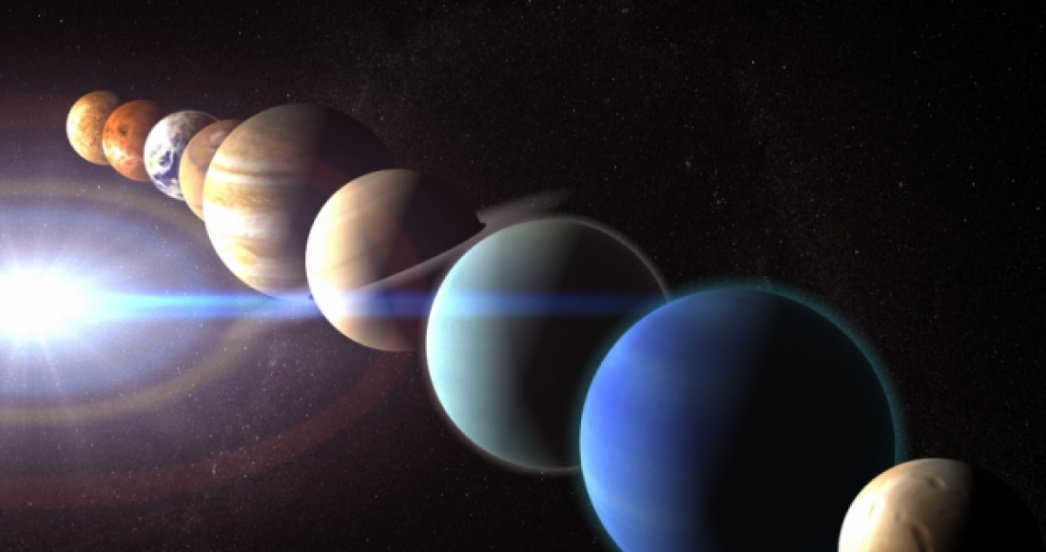
Within this vast collection of stars lies our Solar System – a minuscule astrophysical entity in comparison to the cosmic norm, to which our celestial abode – planet Earth – belongs. To us inhabitants of Earth, the sheer size of the Solar System is immense and challenging to grasp. In the grand scheme of the Universe, it is a mere fraction – a mere 180 astronomical units or 2.693e+10 km. Within this realm, everything adheres to its own set of laws, occupying its own distinct space and following a precise sequence.
Brief characterization and description
Summary and overview
A concise portrayal and depiction
A short analysis and explanation
An abbreviated representation and interpretation
A succinct summary and outline
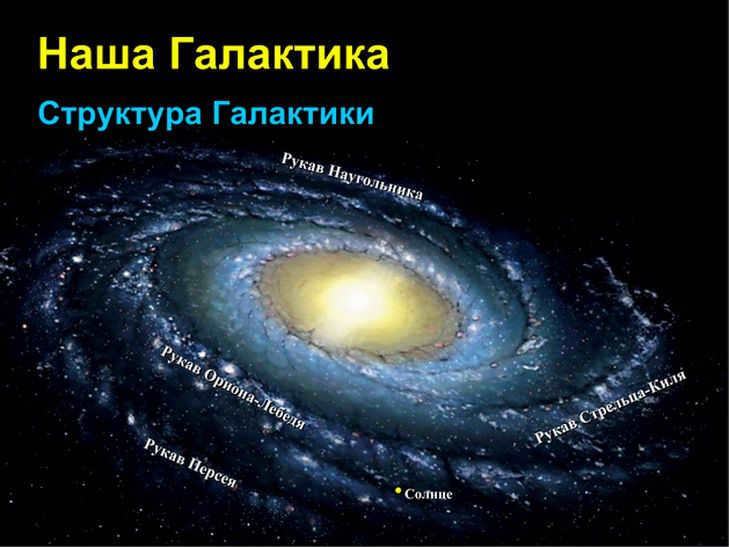
The solar system is believed to have originated approximately 4.5 billion years ago. Similar to other celestial bodies, our star was created as a result of the Big Bang. The formation of the solar system can be explained by the laws of nuclear physics, thermodynamics, and mechanics that continue to govern the universe today. Initially, a star formed, around which planets began to develop through centripetal and centrifugal processes. The Sun itself emerged from a dense cluster of gases known as a molecular cloud, which was the aftermath of an enormous explosion. As a result of centripetal forces, molecules of hydrogen, helium, oxygen, carbon, nitrogen, and other elements were compressed into a single, compact mass.
The protostar emerged as a result of vast and immense processes, initiating the onset of thermonuclear fusion within its structure. This prolonged progression, commencing much earlier, is presently witnessed through the observation of our Sun, which formed 4.5 billion years ago. The magnitude of the phenomena that occurred during the birth of stars can be comprehended by assessing the density, dimensions, and weight of our Sun:
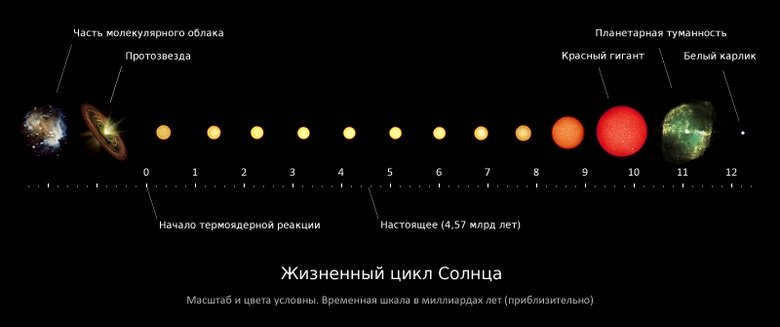
- The density of our star is 1.409 g/cm3;
- The Sun’s volume is approximately equal to 1.40927×1027 m3;
- The mass of our star is 1.9885x1030kg.
Today, our Sun is a typical astrophysical object in the vastness of the Universe. While not the smallest star in our galaxy, it is also not the largest. The Sun, in its current state, is not only the center of our Solar System, but also plays a crucial role in the creation and sustenance of life on our planet.
The formation of the solar system itself occurred during a similar timeframe, give or take around half a billion years. The total mass of the entire system, including the interactions between the Sun and other celestial bodies, is approximately 1.0014 M☉. In simpler terms, all the planets, moons, asteroids, space debris, and gases that orbit the Sun are minuscule compared to the mass of our star.
The solar system’s model was developed based on an earlier and simpler mechanism called tellurium, which was used to simulate the Earth’s position and motion in relation to the Sun. By using tellurium, it was possible to elucidate the principle of our planet’s movement around the Sun and calculate the length of the Earth’s year.
A basic representation of the solar system can be found in school textbooks, where each planet and celestial body is assigned a specific position. It is important to note that the orbits of all objects revolving around the Sun are inclined at different angles to the Solar System’s diametral plane. The planets within the Solar System vary in their distances from the Sun, orbital velocities, and rotational axes.
A solar system diagram illustrates the arrangement of all celestial objects in a single plane. In this instance, such an illustration provides insight into the relative sizes of the celestial bodies and the distances that separate them. This interpretation enables us to comprehend the position of our planet in relation to the other planets, gauge the magnitude of the celestial bodies, and grasp the immense distances that separate us from our celestial counterparts.
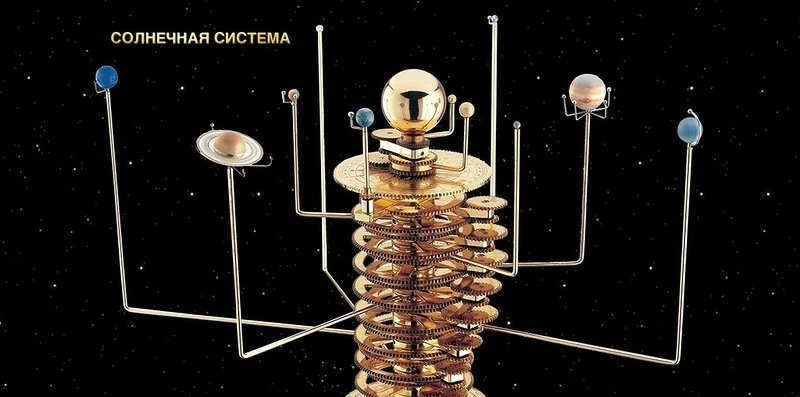
Planetary bodies and other celestial objects within the solar system
The vast expanse of the cosmos is composed of countless stars, many of which are accompanied by their own systems of planets, both large and small. It is a common occurrence to find a star with its own planetary companions. The laws of physics govern the universe universally, and our solar system is no exception to this.
If you are curious about the number of planets that have existed and currently exist within our solar system, it is not a straightforward answer. Currently, the locations of 8 major planets are known. Additionally, there are 5 dwarf planets that orbit the Sun. The existence of a ninth planet is currently a topic of debate within scientific communities.
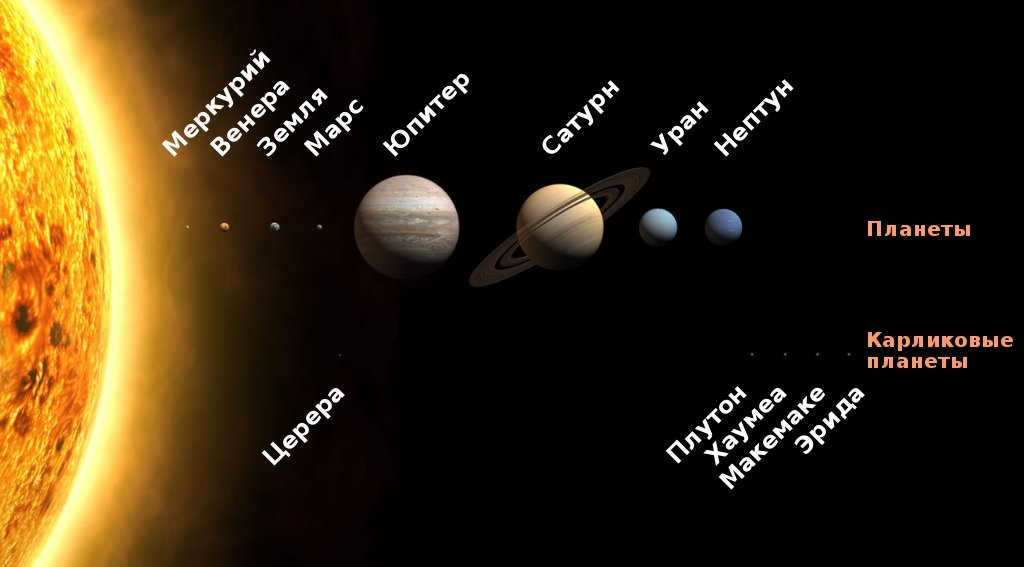
The Solar System is comprised of various groupings of planets, which are organized in a specific sequence:
Every planet in the lineup has its own unique composition and distinct astrophysical characteristics. Which celestial body is larger or smaller when compared to its counterparts? The sizes of the planets within our solar system vary greatly. The initial quartet of entities, akin in structure to our own Earth, boast a solid rocky exterior and a gaseous atmosphere. Mercury, Venus, and Earth are classified as inner planets. Mars concludes this particular cluster. The subsequent group consists of the gas giants: Jupiter, Saturn, Uranus, and Neptune – dense, spherical gaseous formations.
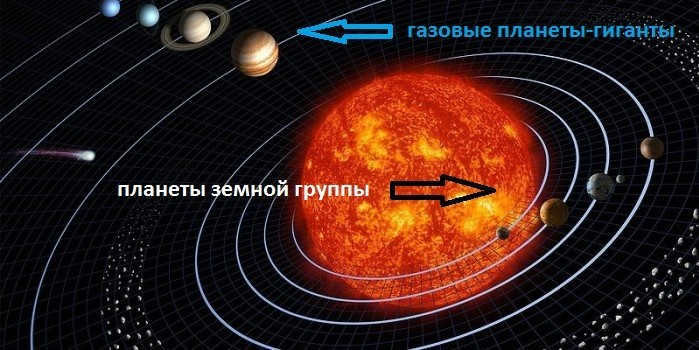
The continuous movement of the planets in the Solar System ensures that there is never a dull moment in their life processes. The celestial bodies that we observe in the sky at present are a snapshot of the current arrangement within our star’s planetary system. It is fascinating to note that the state of the solar system during its formation was vastly different from what we know today.
A testament to the astrophysical characteristics of the contemporary planets can be found in the table below, which also provides information on the distances between the planets and the Sun within the solar system.
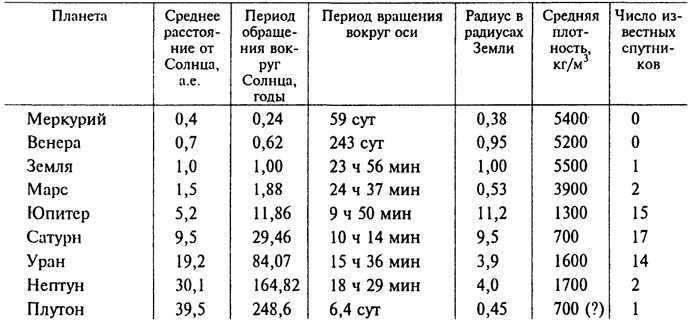
It is believed that the planets in the solar system, as we know them today, may not have been the only ones that existed. According to various theories, there might have been additional planets in the early stages of the solar system’s formation. This idea is supported by ancient myths and legends that depict the presence of other celestial bodies and catastrophic events that led to the demise of a planet. The structure of our solar system further reinforces this notion, as it contains objects that are believed to be remnants of violent cosmic cataclysms.
An impressive illustration of such action can be seen in the asteroid belt situated between the orbits of Mars and Jupiter. In this area, a vast quantity of extraterrestrial objects are concentrated, primarily composed of asteroids and minor planets. These irregularly shaped remnants are widely regarded in human society as the remnants of the protoplanet Phaeton, which perished billions of years ago due to a significant cataclysmic event.
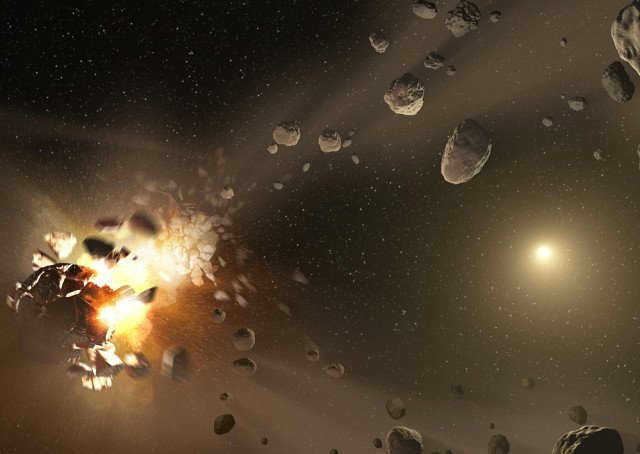
There is a belief among scientists that the asteroid belt was created when a comet was destroyed. Astronomers have discovered the presence of water on the sizable asteroid Themis, as well as on the smaller planets Ceres and Vesta, which are the most significant objects in the asteroid belt. The presence of ice on the surface of these asteroids may suggest that they were formed from cometary material.
Pluto, which used to be classified as a large planet, is no longer considered a full-fledged planet today.
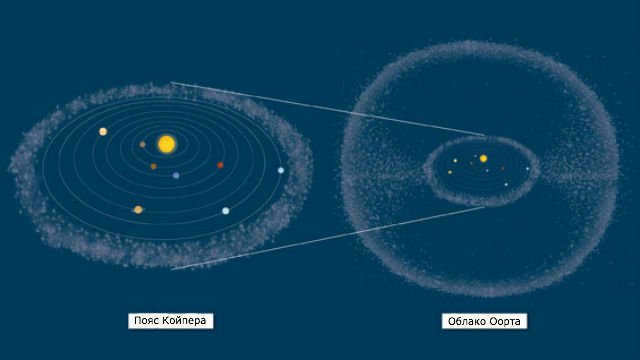
These dwarf planets are situated in the Kuiper belt, which is a region of our solar system. The Kuiper belt is located between the Oort cloud and the Sun, and it is not an empty space. In 2005, scientists discovered the farthest celestial body in our solar system, which is the dwarf planet Eridu. The exploration of the outer regions of our solar system is an ongoing process. The Kuiper belt and the Oort cloud are believed to be the outer boundaries of our star system. The Oort cloud is a cloud of gas that is one light-year away from the Sun and it is the birthplace of comets, which are the companions of our star.
Distinctive Features of the Planets in the Solar System
The Earth group of planets consists of the two nearest planets to the Sun, Mercury and Venus. Despite their physical resemblance to our planet, these two celestial bodies are inhospitable environments for human beings. Mercury, the smallest planet in our solar system, orbits closest to the Sun. The intense heat from our star scorches the planet’s surface, effectively eroding its atmosphere. The distance between the planet’s surface and the Sun is 57,910,000 kilometers. With a diameter of only 5,000 kilometers, Mercury is smaller than most of Jupiter and Saturn’s major moons.
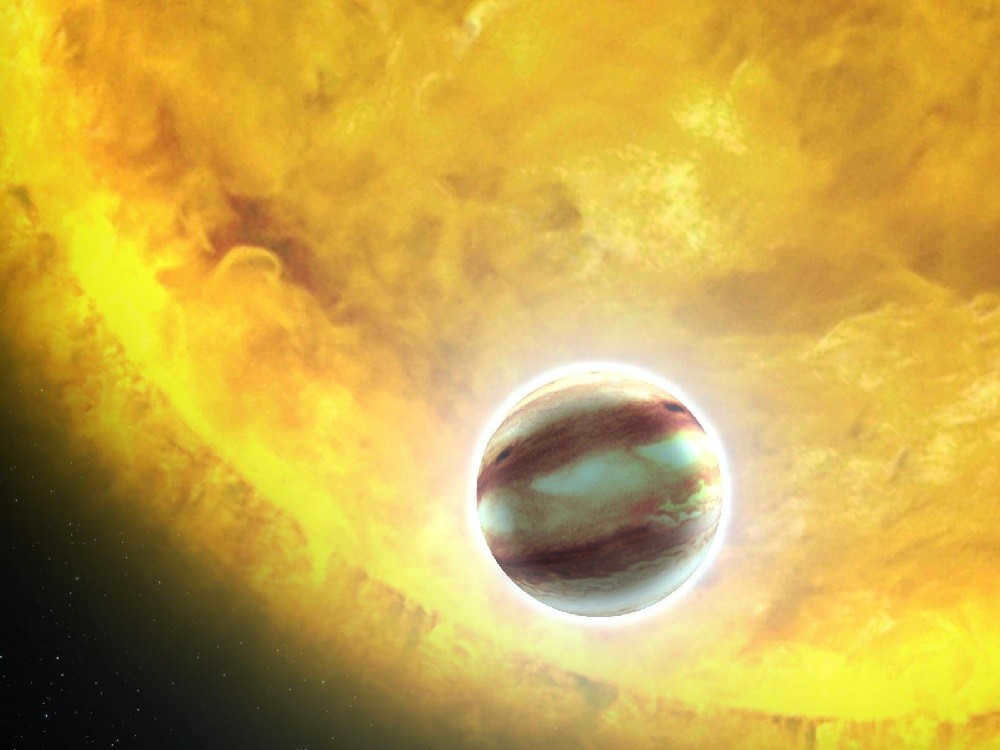
Titan, one of Saturn’s moons, has a diameter of over 5,000 km, while Ganymede, one of Jupiter’s moons, has a diameter of 5,265 km. These two moons are only surpassed in size by Mars.
The first planet in our solar system, Mercury, orbits our star at an astonishing speed, completing a full revolution around the sun in just 88 Earth days. Due to its close proximity to the sun, it is extremely difficult to spot this small and fast planet in the night sky. Mercury experiences the largest daily temperature variations among the planets in our solar system. While the side of the planet facing the sun can reach temperatures of up to 700 degrees Celsius, the side facing away from the sun is exposed to temperatures as low as -200 degrees Celsius.
The internal structure sets Mercury apart from all other planets in the solar system. With its largest iron-nickel inner core, which makes up 83% of its total mass, Mercury stands out. Surprisingly, this unique feature does not give Mercury its own natural satellites.
Next in line after Mercury is Venus, which is the planet closest to us. Venus is located at a distance of 38 million kilometers from Earth and bears a striking resemblance to our own planet. In terms of diameter and mass, Venus is almost identical to Earth, albeit slightly smaller in these aspects. However, beyond these similarities, our neighboring planet is vastly different from our cosmic abode. Venus takes 116 Earth days to complete one revolution around the Sun, and its rotation on its own axis is incredibly slow. Over the course of 224 Earth days, Venus reaches an average surface temperature of a scorching 447 degrees Celsius.

Similar to its precursor, Venus does not possess the necessary physical conditions for the existence of familiar life forms. The planet is enveloped by a dense atmosphere primarily composed of carbon dioxide and nitrogen. Both Mercury and Venus are the sole planets within the solar system that do not have any natural satellites.
Earth, situated approximately 150 million kilometers away from the Sun, is the final inner planet in the Solar System. Our planet completes one revolution around the Sun in 365 days. It also spins on its own axis in 23.94 hours. Earth is the initial celestial body along the Sun’s path to the periphery that possesses a natural satellite.
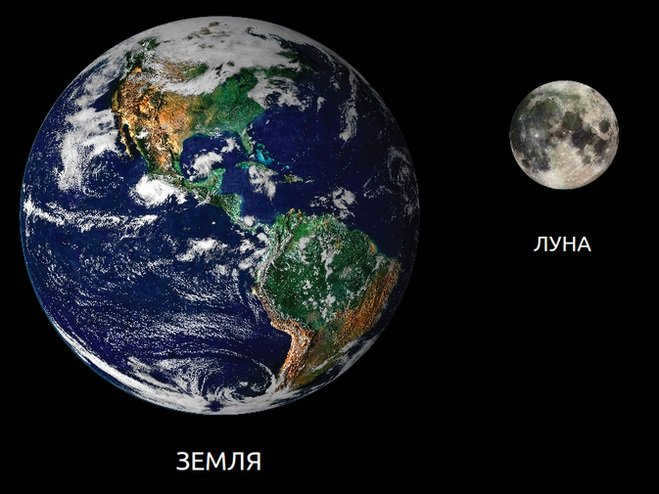
Disclaimer: The astrophysical parameters of our planet have been thoroughly examined and are well-known. Earth, being the largest and most dense planet among the inner planets in the solar system, retains the natural physical conditions necessary for the existence of water. It possesses a stable magnetic field that plays a crucial role in maintaining its atmosphere. Furthermore, Earth stands out as the most extensively researched planet. Subsequent studies continue to be of both practical and theoretical significance.
Wrapping up the Earth-group planets parade is Mars. Further examination of this planet has sparked not only theoretical curiosity, but also practical interest in regards to human exploration of alien worlds. Not only is the relatively close proximity to Earth (an average of 225 million kilometers) appealing to astrophysicists, but also the absence of intricate climatic conditions. While Mars is enveloped in an atmosphere, it exists in an extremely thin state, possesses its own magnetic field, and experiences temperature fluctuations on its surface that are not as extreme as those on Mercury and Venus.
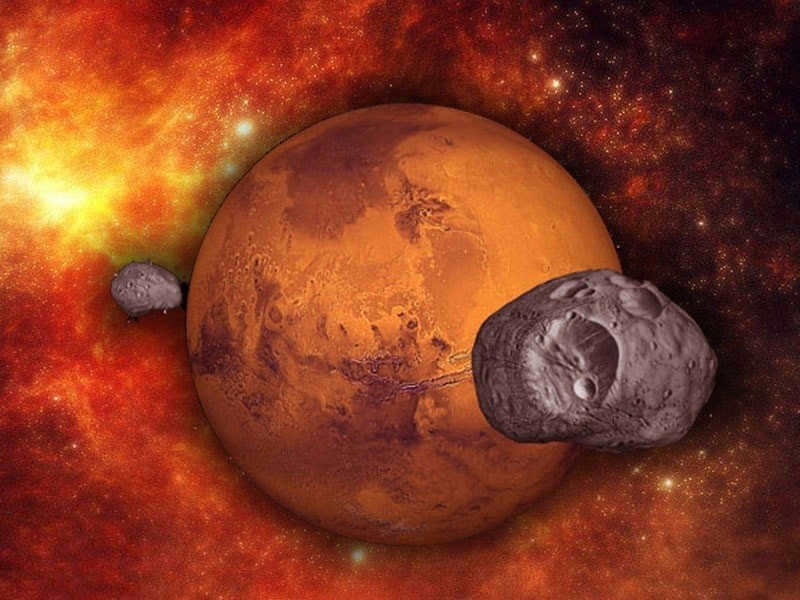

Similar to Earth, Mars possesses two moons, Phobos and Deimos, the origin of which has recently come under scrutiny. Mars is the fourth and final planet in the solar system with a solid surface. Beyond the asteroid belt, which serves as a sort of inner boundary of the solar system, lies the domain of the gas giants.
The most massive celestial bodies in our solar system
The outer planets in our solar system are the largest and most prominent members of the second group of planets. Jupiter, Saturn, Uranus, and Neptune are located farthest from our star and possess tremendous astrophysical characteristics compared to Earth. These cosmic bodies are known for their massive size and predominantly gaseous composition.
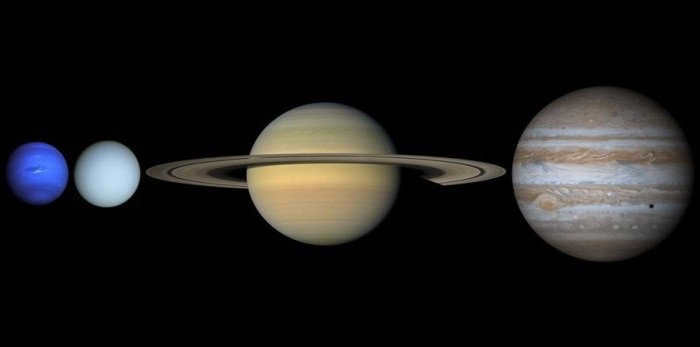
Jupiter and Saturn are the primary attractions of the solar system. Together, their mass is sufficient to contain the mass of all other celestial bodies in the solar system. Jupiter, the largest planet in our solar system, has a weight of 1876.64328 – 1024 kg, while Saturn has a mass of 561.80376 – 1024 kg. These planets possess the greatest number of natural satellites. Among them, Titan, Ganymede, Callisto, and Io are the largest satellites in the entire solar system and are comparable in size to the planets of the Earth group.
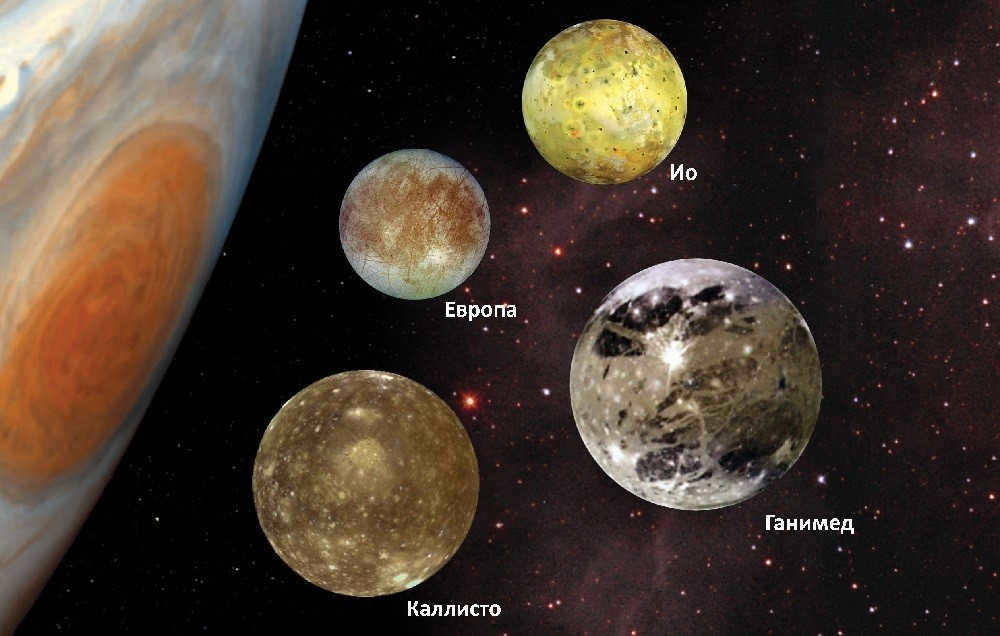
Saturn, the gas giant, is marginally less in size compared to its larger sibling Jupiter. Similar to Jupiter, this planet is primarily composed of hydrogen and helium, the fundamental gases that constitute our star. With a diameter of 57,000 kilometers, Saturn also bears resemblance to a halted protostar in terms of its dimensions. Furthermore, Saturn possesses a slightly lesser number of satellites, totaling to 62 as opposed to Jupiter’s 67. One of Saturn’s satellites, Titan, possesses an atmosphere, much like Jupiter’s satellite, Io.
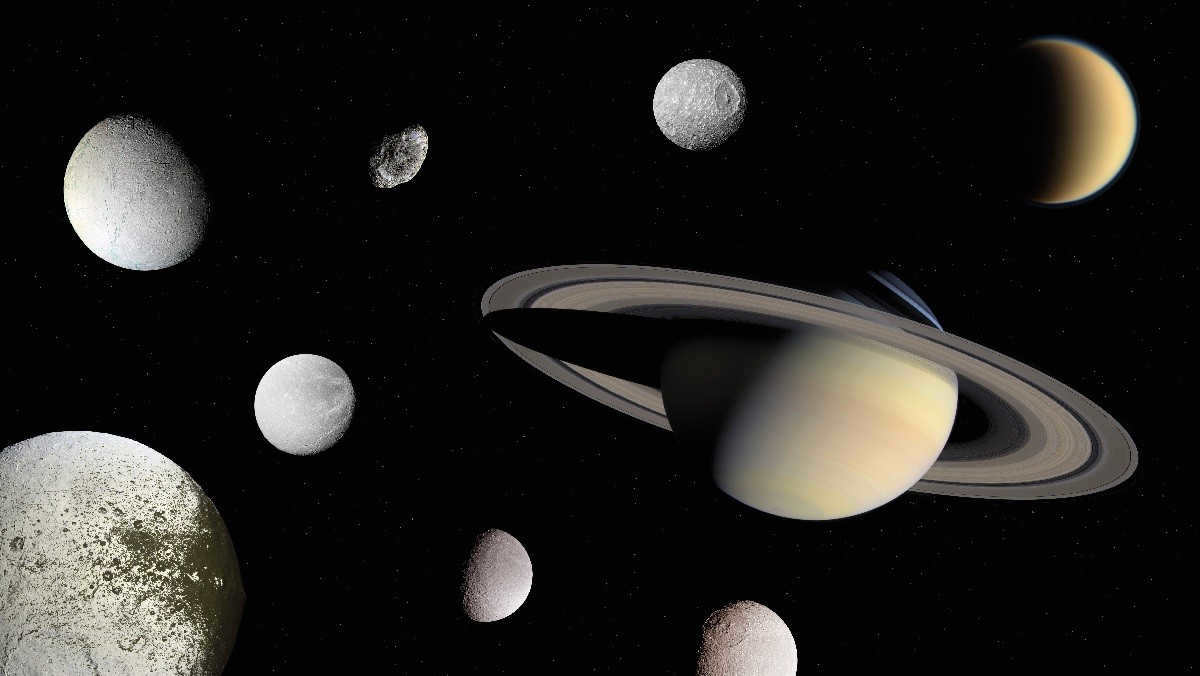
To put it differently, the immense planets Jupiter and Saturn, along with their arrays of moons, bear a striking resemblance to miniature versions of our own solar system, complete with a central point and a complex arrangement of celestial bodies.
Beyond the two gas giants lie the frigid and shadowy worlds of Uranus and Neptune. These celestial entities are situated 2.8 billion and 4.49 billion kilometers away from the Sun, respectively. Thanks to their vast separation from Earth, the discovery of Uranus and Neptune occurred relatively recently. In contrast to the other gas giants, Uranus and Neptune boast substantial quantities of frozen gases, including hydrogen, ammonia, and methane. Consequently, these two planets are dubbed as ice giants. Uranus is smaller than Jupiter and Saturn, ranking as the third largest planet in our solar system. It serves as the cold pole of our celestial neighborhood. On Uranus’ surface, an average temperature of -224 degrees Celsius has been registered. Differing from other celestial bodies orbiting the Sun, Uranus exhibits a pronounced tilt on its axis, causing the planet to appear as if it is rolling during its journey around our star.
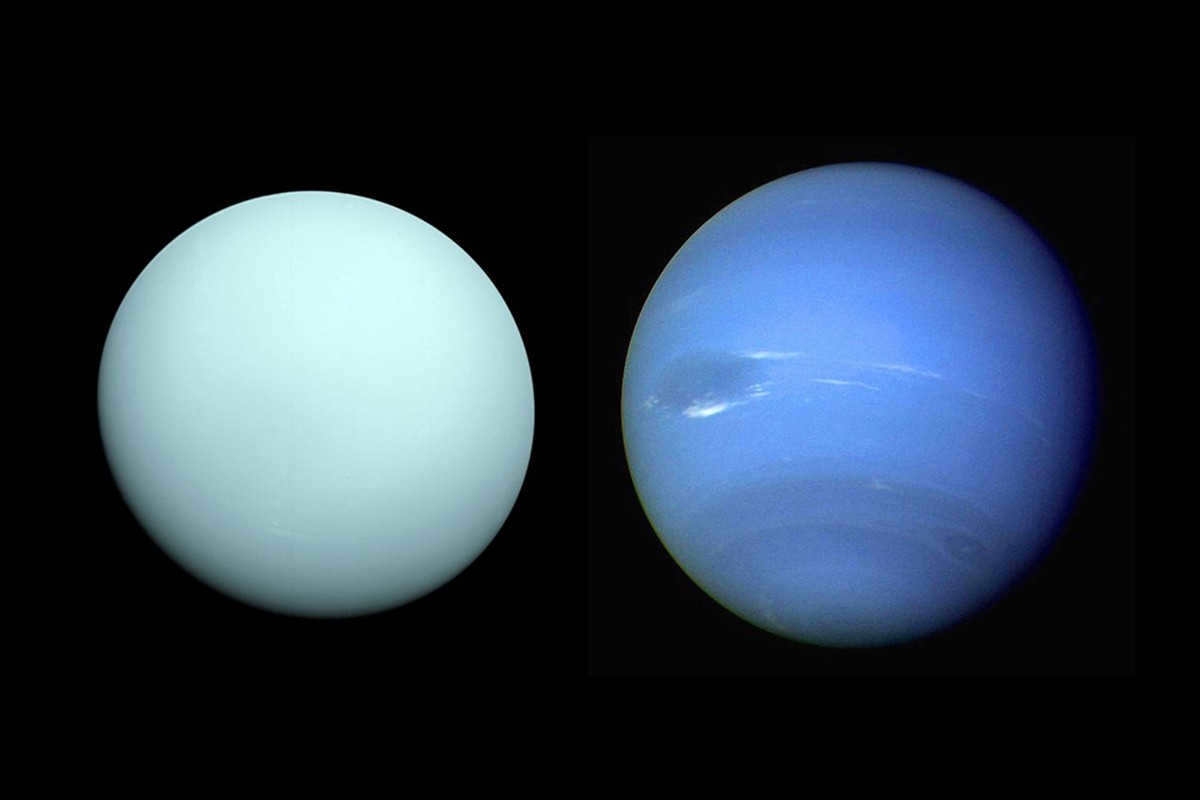
Both Uranus and Neptune orbit the Sun in a slow and majestic manner. Uranus takes 84 Earth years to complete one orbit, while Neptune takes twice as long, at 164 Earth years.
To sum up
Our solar system is an immense mechanism, where each planet, satellite, asteroid, and celestial body follows a well-defined path. The laws of astrophysics have remained unchanged for 4.5 billion years. On the outskirts of our solar system, dwarf planets reside in the Kuiper belt. Comets frequently visit our star system, with a periodicity of 20 to 150 years, passing by our planet within view.
The cosmos is immense, and humanity occupies a remarkably humble position within it. We reside on planet Earth, and more broadly, within the solar system. The solar system. To us, the Solar System resembles an expansive and grand abode that remains largely unexplored. It is brimming with enigma and intrigue; there is an abundance to behold! The scorching Sun and the frigid colossal planets, desolate Mars and the icy moons of Saturn. While the Solar System may be a mere speck of dust in the expanse of space by universal standards, it holds greater significance to us than any other star system, for it is our abode in the cosmos.
What is the solar system?
In simple terms, the solar system can be described as a group of celestial objects that revolve around the Sun. These objects include:
- The eight main planets, including Earth and its moons.
- Six dwarf planets that are recognized today.
- Several million asteroids that mainly orbit between Mars and Jupiter.
- A collection of relatively small icy bodies beyond Neptune’s orbit, known as the Kuiper Belt. It is believed that there could be millions of such bodies in this region.
- Comets.
- Meteoric bodies, which consist of large boulders as well as smaller rocks, stones, pebbles, grains of sand, and ice that travel around the Sun.
- Particles of dust between planets.
- The frozen celestial bodies – serve as the cores of future comets in the outer reaches of the solar system, forming the Oort cloud. Their sizes vary from a few meters to several kilometers in diameter.
All of these entities revolve around the Sun, held in place by the gravitational force of the celestial body. (This is the same force that pulls us back to the ground when we jump up. It is also known as gravity.)
Within the Solar System, the Sun’s gravitational force prevails over the gravitational force exerted by other cosmic entities such as stars, star clusters, and galaxies. We can consider the Solar System as the realm of the Sun – it occupies the central position, and all the aforementioned entities revolve around our home star like on a leash.
Structure of the Solar System
Let’s take a closer look at the composition of the solar system.
The Sun
The central component of the Solar System is the Sun. It serves as the sole star in our system, being the largest and most massive entity. The Sun comprises 99.86% of the overall mass of all celestial bodies within the solar system. To put it differently, our home star is approximately 1000 times more massive than all the planets combined! The Sun is an enormous sphere of luminous gas that radiates light and warmth. It is due to the Sun that Earth experiences favorable conditions for the sustenance of life.
Planets
The planets are the next significant celestial bodies in our solar system after the Sun. As of now, we have discovered a total of eight large planets. These planets are intriguing dark spheres that reflect the radiant light emitted by the Sun. Among them, Earth stands out as one of the members of the planetary family. Although it may not be the largest, it certainly isn’t the smallest either.
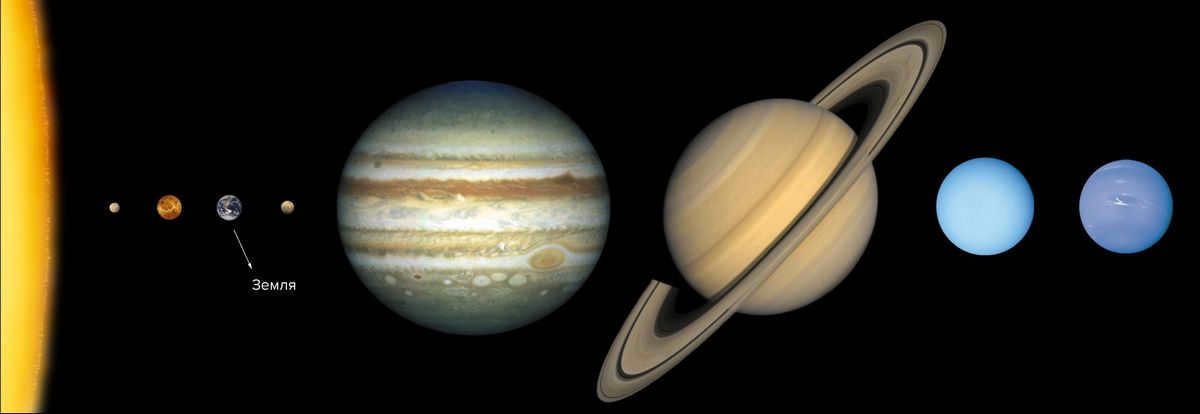
Six out of the total eight planets in our solar system are accompanied by satellites. For instance, Earth has one significant satellite known as the Moon. On the other hand, Mars possesses two extremely small satellites, while Jupiter boasts an impressive count of approximately 80 satellites! Nonetheless, only four of these satellites are comparable in size to the Moon, with the remainder being considerably smaller. Additionally, Saturn possesses over 80 satellites, whereas Uranus and Neptune have an estimated total of 40 additional satellites.
When considering their size, the planets are relatively substantial entities, albeit they are still dwarfed by the immense size of the Sun. Take Jupiter, the largest planet in our solar system, for example. Despite its significant size, it is still roughly ten times smaller than the Sun in terms of diameter.
Moreover, the solar system comprises a wide array of other elements. This includes various smaller objects, ranging in size from tiny particles measuring mere hundredths of a millimeter to massive bodies spanning up to 2-3 thousand kilometers. Among the largest representatives of these objects are asteroids and comets.
Asteroids
In the realm of celestial bodies, asteroids stand as unique entities. These relatively small solid bodies, ranging in diameter from several hundred meters to hundreds of kilometers, are often referred to as small planets, although they should not be mistaken for dwarf planets. Unlike their spherical counterparts, asteroids tend to possess irregular shapes. Similar to planets, asteroids do not emit light themselves; instead, they rely on the sun’s rays for illumination. While asteroids can be found in various locations within the solar system, the majority of them reside in a region known as the asteroid belt, situated between the orbits of Mars and Jupiter.
Comets
Comets are celestial objects that are approximately the size of a city. They have a composition similar to massive snowballs, covered in a solid shell made of dust and silicates.
Picture a melting snowdrift in the springtime. As the heat acts upon it, the snowdrift develops a dense and dark crust, while the interior becomes loose and porous. Now, imagine placing this formation in outer space, and you have a miniature comet.
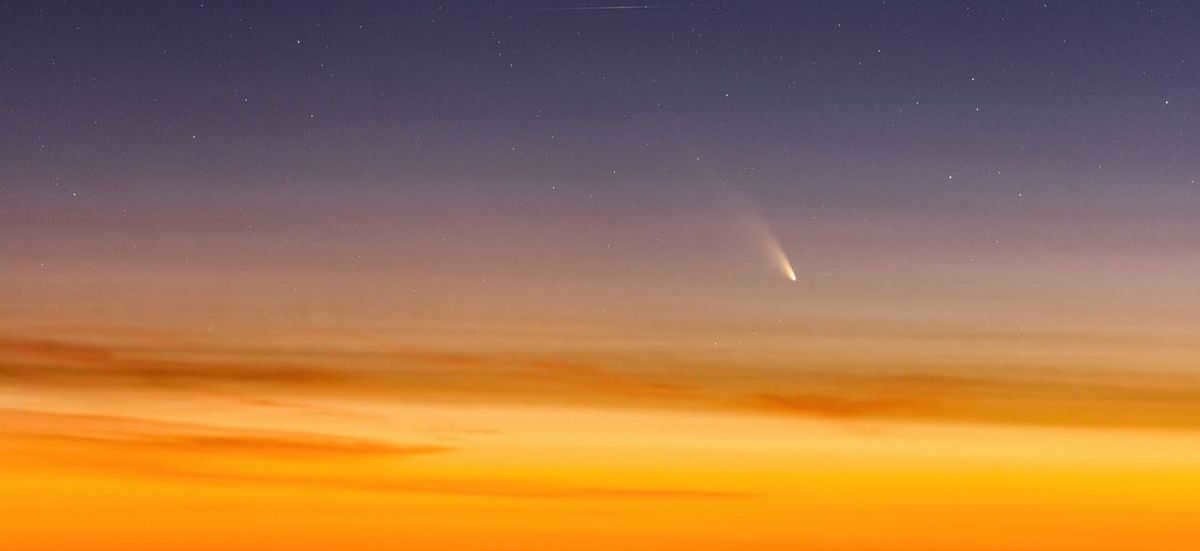
Comets are nearly invisible when they are far away from the Sun, but as they approach the star, they heat up and start to melt. This melting process creates a large atmosphere or coma around the comet’s nucleus, which is made up of gases, water vapor, and dust that have evaporated from the comet’s surface. The pressure from sunlight and solar wind pushes part of this atmosphere back, forming a tail. Some comets even have two tails simultaneously – an ion tail made of gas and a dust tail.
The most abundant entities in the solar system are meteoroids or meteors.
These are small rocks, sand grains, ice, and even dust, randomly flying around, moving between the orbits of the planets. When such an object collides with Earth, it typically burns up in the upper atmosphere before reaching the surface. This is what we observe as a meteor or, commonly known as a “shooting star”.
If the object is large enough to survive the atmospheric descent, it lands on the Earth’s surface and becomes a meteorite.
Meteors have various origins: some are formed from the disintegration of comets, others result from asteroid collisions, and some break off from planets and their moons when large meteorites impact them.
The Structure and Composition of the Solar System
To simplify their study, astronomers have categorized the solar system into various regions or zones.
The Inner Solar System
The inner solar system refers to the region encompassing the space within the asteroid belt, where the sun’s energy is sufficient to sustain liquid water. Within this area, we find the sun and four neighboring planets: Mercury, Venus, Earth, and Mars. Collectively known as the Earth-group planets (or the inner planets), they share similarities in terms of size and mass. Additionally, their internal composition is comparable, consisting of iron and nickel cores surrounded by rocky surfaces and mantles.
Out of the inner planets, Earth holds the title for being the largest.
There is space available for an additional dwarf planet beyond the orbit of Mars. However, it is unoccupied. In place of a planet, there exists a collection of asteroids, comprising over a million diminutive entities. Previously, astronomers entertained the notion of a planet called Phaeton, which inexplicably disintegrated into numerous fragments. However, subsequent research did not substantiate this theory.
The outer solar system
The outer solar system is a region characterized by the presence of large, frigid planets.
Jupiter is the planet that follows Mars in terms of distance from the Sun. It holds the title for being the largest and most massive planet in our solar system. Jupiter’s mass is over 300 times greater than that of Earth. The planet boasts a formidable gravitational force, which is believed to have prevented the formation of another planet in the asteroid belt.
Interestingly, Jupiter lacks a solid surface, setting it apart from the terrestrial planets. Instead, it is classified as a gas giant. Jupiter is primarily composed of hydrogen and helium, with traces of other gases. Its composition closely resembles that of the Sun.
Following Jupiter is Saturn, another gas giant planet. Saturn is slightly smaller and lighter than Jupiter, but it is adorned with magnificent and dazzling rings that can be observed even with a modest telescope.
Further out in the solar system, we find the planets Uranus and Neptune. These two are often referred to as twin planets due to their striking resemblance. Just like Jupiter and Saturn, Uranus and Neptune are massive planets with formidable atmospheres. However, there are some distinctions: Uranus and Neptune are comparatively smaller and their composition consists not only of gas but also of ice. Moreover, Uranus and Neptune are extremely frigid, with temperatures in the upper layers of their atmospheres barely reaching -200 ° C (while the temperature slowly rises as we go deeper).
Kuiper Belt
The Kuiper Belt is a vast expanse of small icy bodies that exists beyond the orbit of Neptune. This region, which spans billions of kilometers from the Sun, is a distinct and significant part of our Solar System. Unlike the rocky and metallic composition of the main belt asteroids, the objects within the Kuiper Belt are predominantly composed of ice. Pluto, the initial discovery in 1930, is now recognized as one of the six dwarf planets.
The Oort Cloud: A Vast Reservoir of Icy Planetesimals
Located far beyond the Kuiper belt, the Oort Cloud is an immense sphere-like region filled with icy planetesimals. This incredible celestial body surrounds our solar system from all directions and is estimated to contain around a trillion cometary nuclei, if not more. Scientists believe that the Oort Cloud exists at an astonishing distance of up to 100,000 astronomical units away from the Sun, which is roughly halfway to the nearest star. Such an immense distance makes it impossible to observe any objects within the Oort Cloud, even with the most advanced telescopes. However, we are confident in the existence of this cloud due to the periodic arrival of new comets originating from it.
What is the movement of objects around the Sun in the solar system like?
Objects in the solar system, including planets and asteroids, generally move in a similar manner around the Sun. This movement occurs in a plane known as the ecliptic and follows the same direction as Earth. When observing from Earth’s north pole as the “top,” the planets move counterclockwise. In the sky, the planets appear to move from west to east against the backdrop of stars.
However, comets and Kuiper Belt objects behave differently. They can move in both clockwise and counterclockwise directions and at various angles to the ecliptic.
What is the origin of the Solar System?
The Solar System’s oldest rocks have been discovered in meteorites that have descended to Earth. Using radioisotope dating, scientists have determined that these rocks are 4 billion 568 million years old. This age is widely accepted as the starting point of our system. (To put it simply, the solar system began approximately 4.5 billion years ago.)
However, the question remains: where did it originate from initially?
Studies indicate that the formation of the solar system occurred through the compression of a cloud comprised of cold interstellar gas and dust.
This cloud primarily consisted of hydrogen, helium, and trace amounts of other chemical elements. Numerous comparable clouds have been identified within our Galaxy. These clouds appear as dark voids in photographs, contrasting with the vibrant, luminous nebulae in the background. Within certain clouds, known as molecular clouds, the ongoing creation of stars and planets is taking place.
Typically, molecular clouds have sufficient size to facilitate the creation of multiple stars – dozens or even hundreds. It is likely that our Sun originated from such a vast cloud. Consequently, there are likely to be other stars and solar systems in the Galaxy that share a common origin with the Sun, as they were born from the same material around the same time. However, over the course of billions of years, these celestial bodies have become scattered so widely throughout the Galaxy that we remain unaware of their existence.
The cloud started to contract due to its own gravitational force: the outer regions were pulled towards the central regions. As it contracted, it fragmented into pieces. Each piece continued to contract and eventually formed an individual star system. The random rotation of the cloud increased as it compressed, following the law of conservation of momentum (this phenomenon is also observed in ice skaters). The combination of the cloud’s rotation and the force of gravity resulted in the formation of a disk-shaped fragment, which eventually became the Solar System.
Formation of a Planetary System
The majority of the mass in a protoplanetary disk is concentrated in its center. It is in this region that a clump, known as a protostar, begins to form. As the protostar contracts, it becomes hotter and begins to emit light. This process leads to the creation of a protosun and a protoplanetary disk. Within this disk, planets develop through the gradual accumulation of small particles and the capture of gas from the surrounding material.
Due to the high temperature of the protosun, only heavy elements such as metals and silicates are able to condense near its vicinity. These materials come together to form silicate balls known as chondrules, which then gather to create larger planetesimals. From these planetesimals, protoplanets from the Earth group as well as asteroids are eventually formed.
Where can we find the solar system?
The solar system, which includes the Earth, is located within the galaxy. Our galaxy, known as the Milky Way, is a massive assortment of stars, dust, and interstellar gas. When the night is devoid of moonlight, we can observe the Milky Way as a blurry streak across the sky.
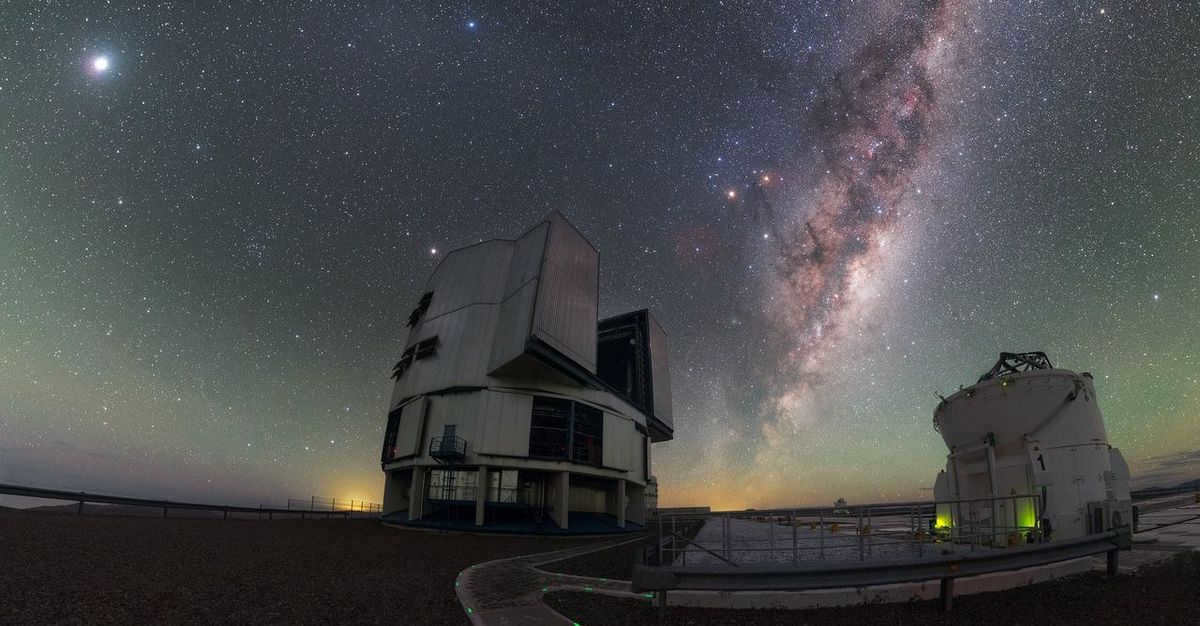
This collection of stars is composed of countless celestial bodies that are too remote to be observed individually. Furthermore, all the stars that are visible to the naked eye or through a telescope are part of our Galaxy.
Similar to how the planets orbit the Sun, the solar system revolves around the center of the Milky Way. However, while it takes Earth one year to complete a full orbit around the Sun, the entire Solar System requires a staggering 250 million years to complete a single revolution around the center of the Milky Way! Astronomers refer to this immense span of time as a galactic year.
